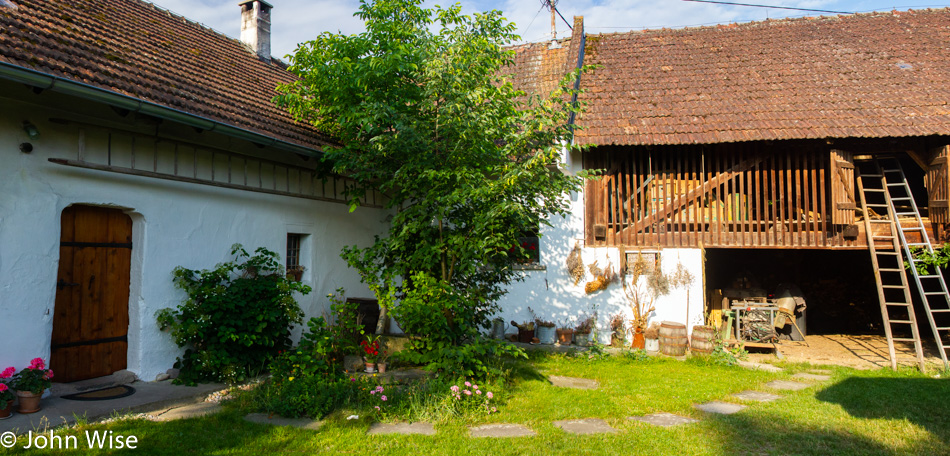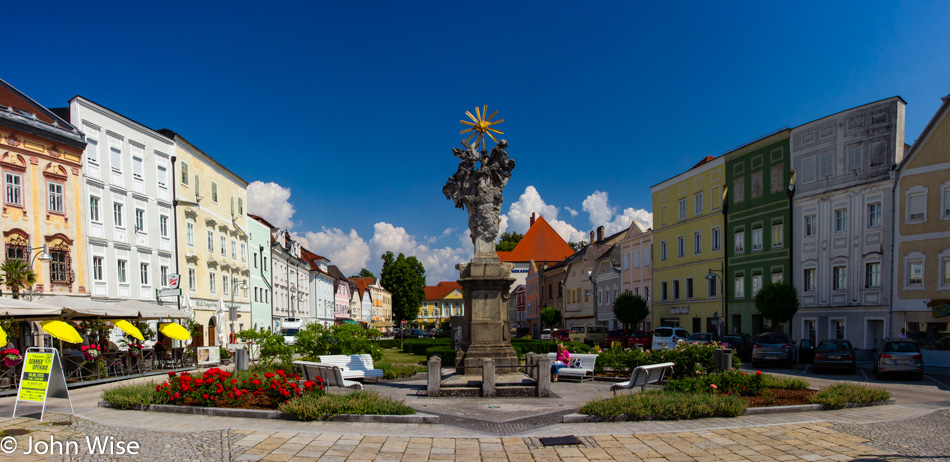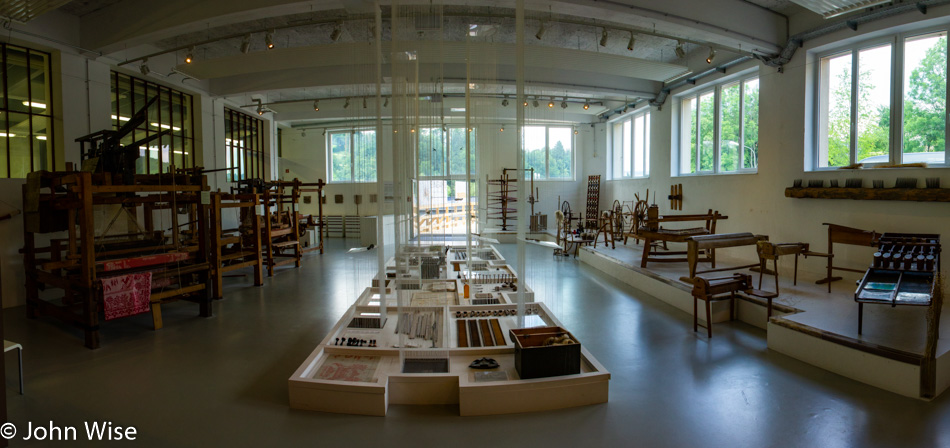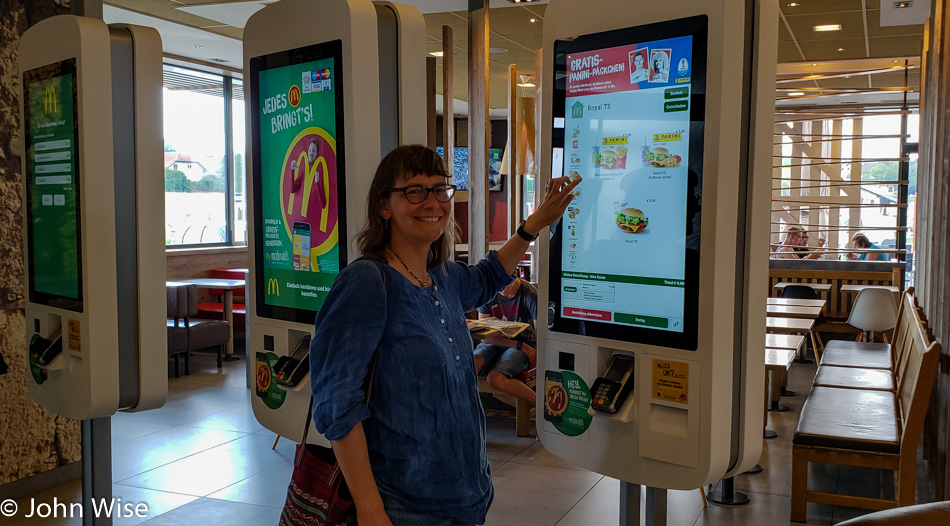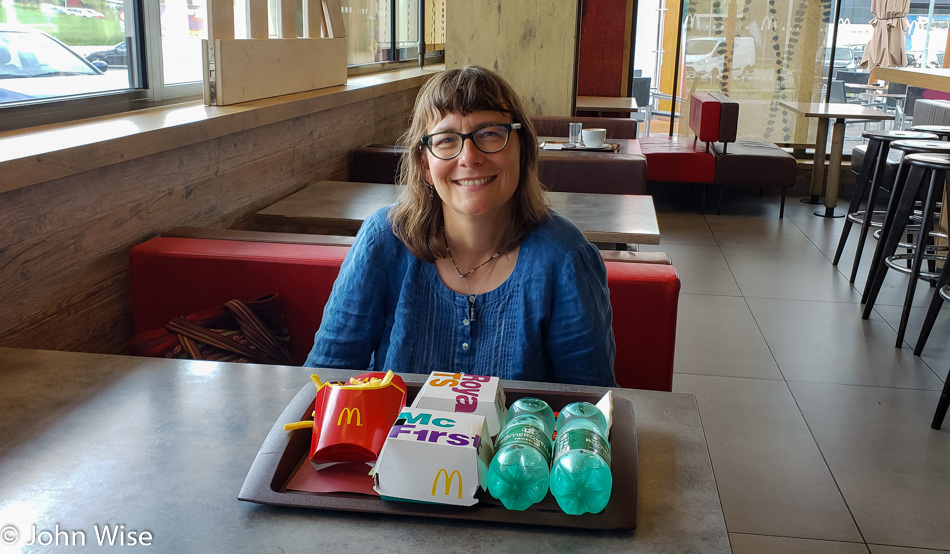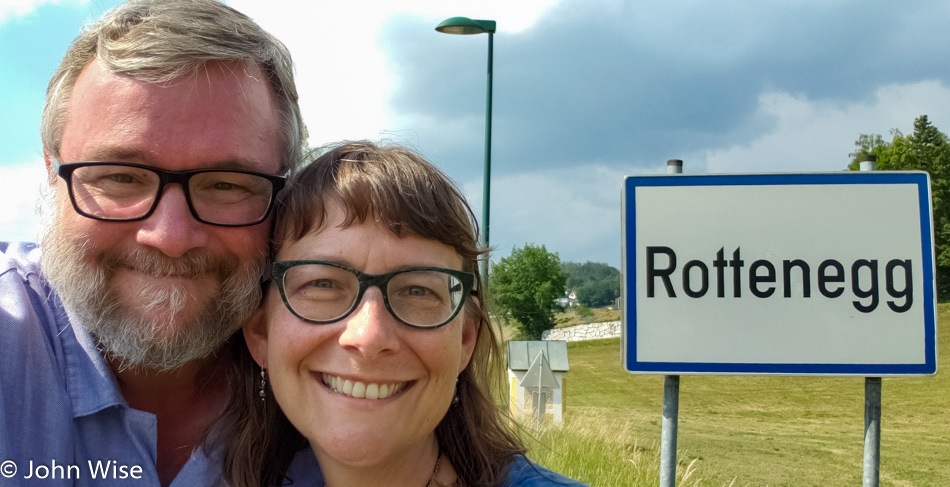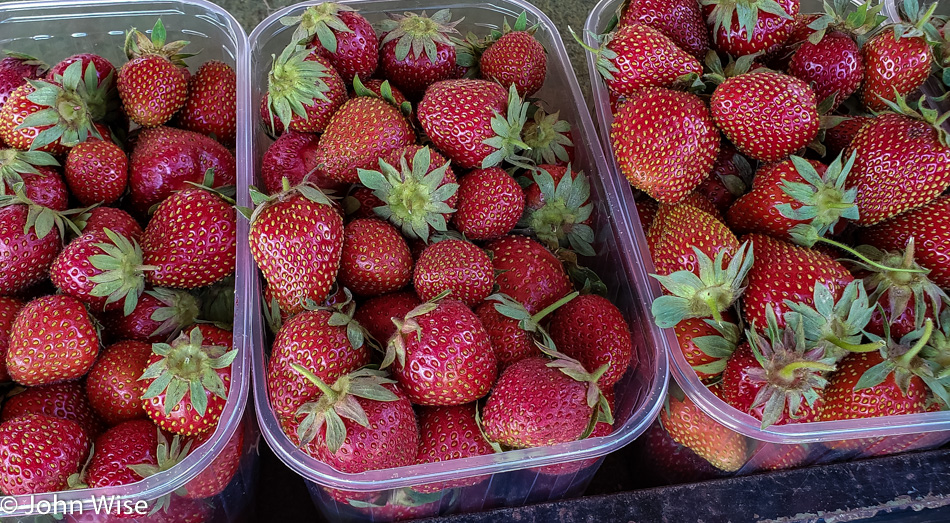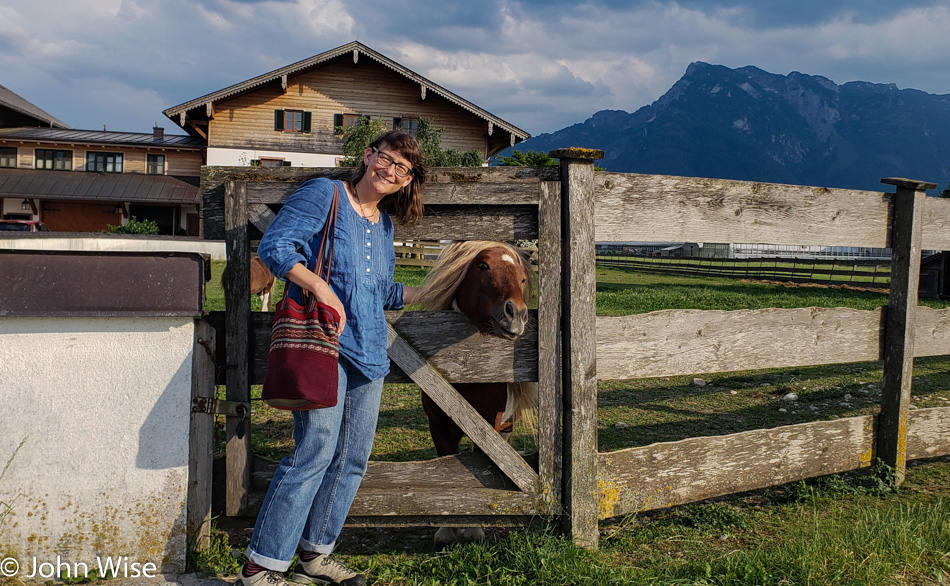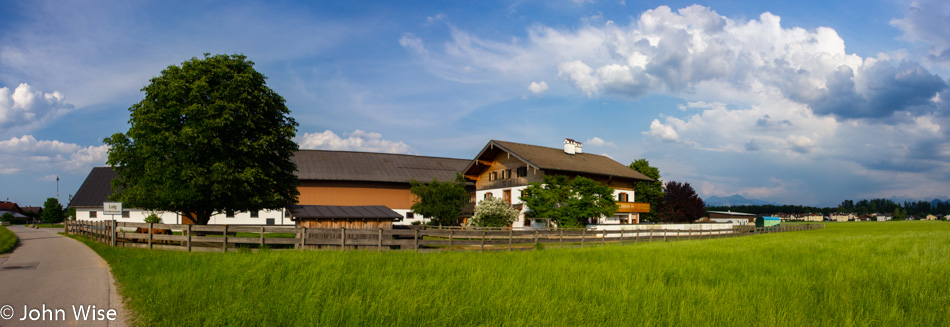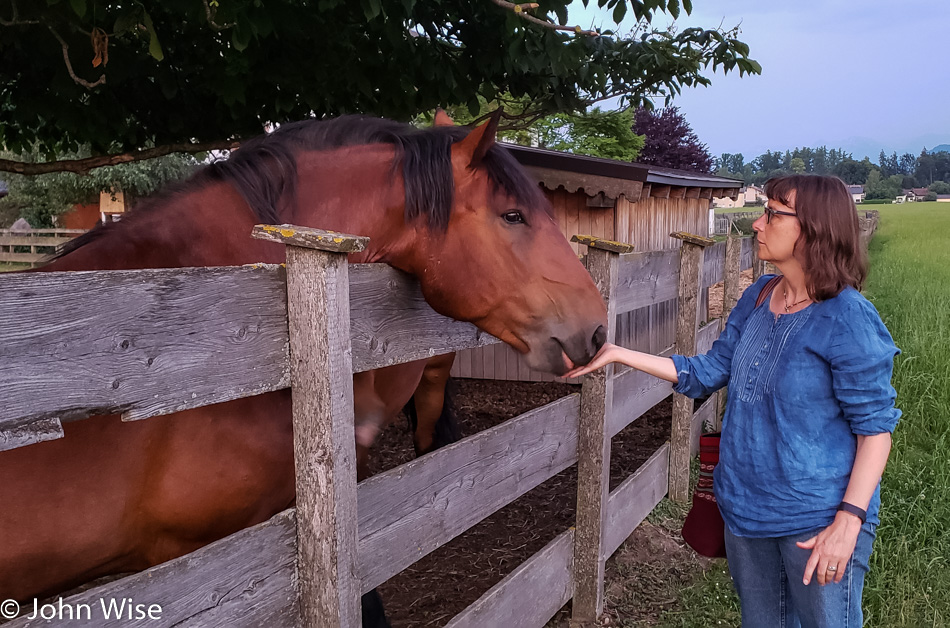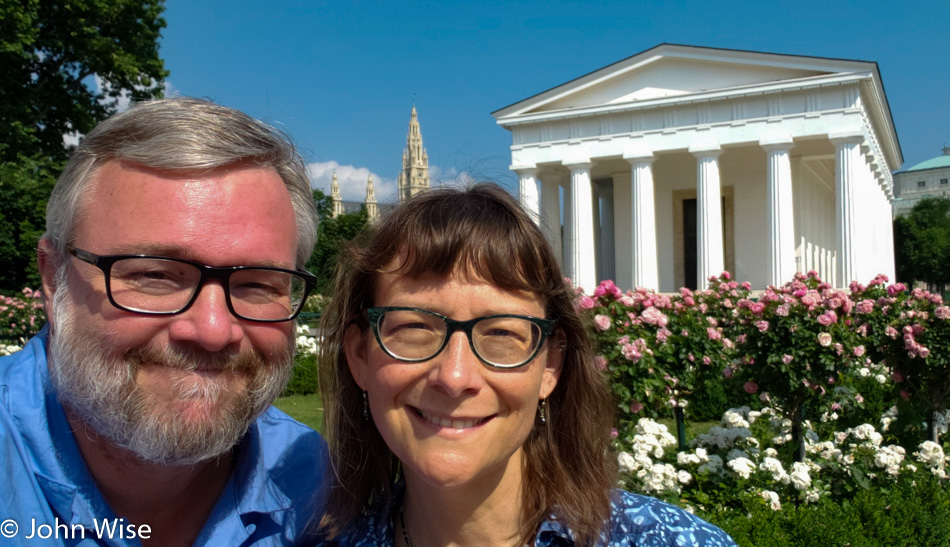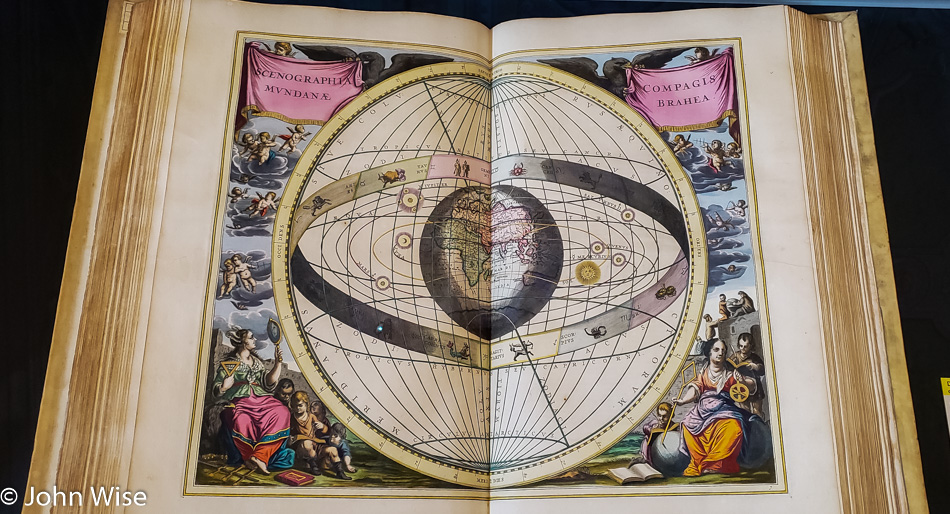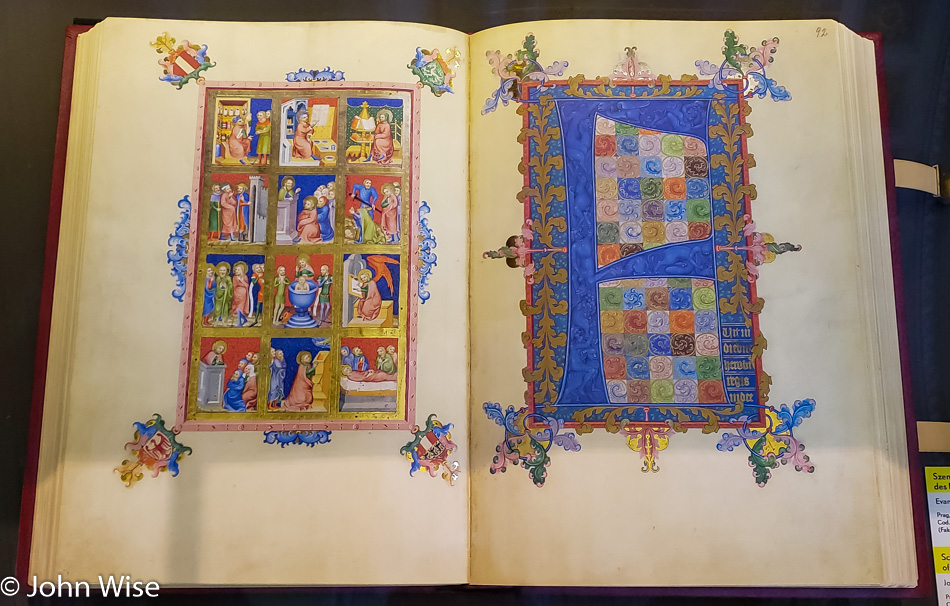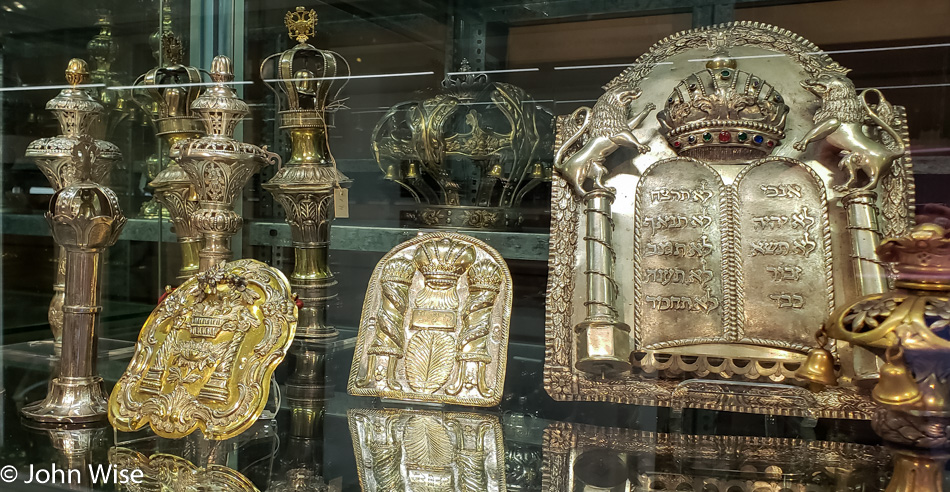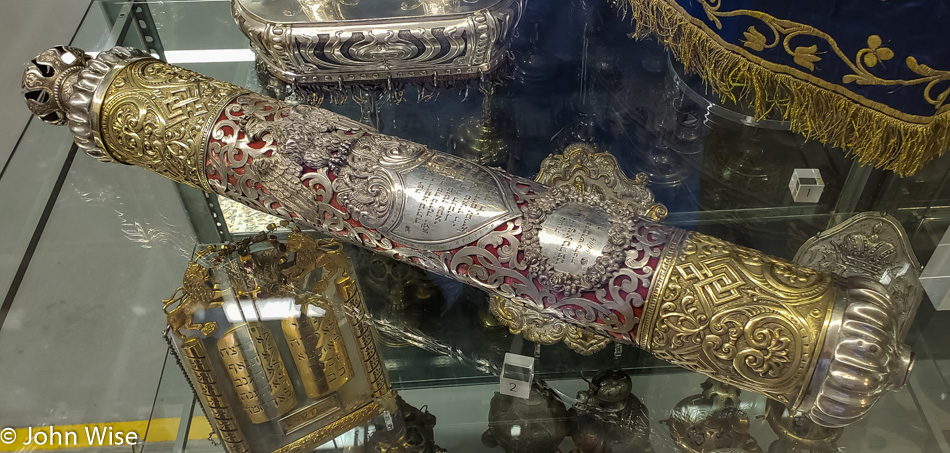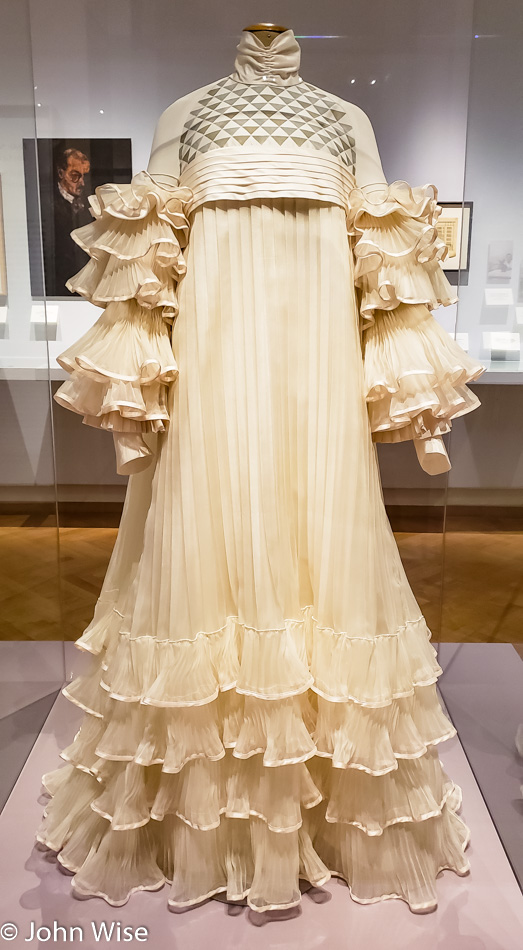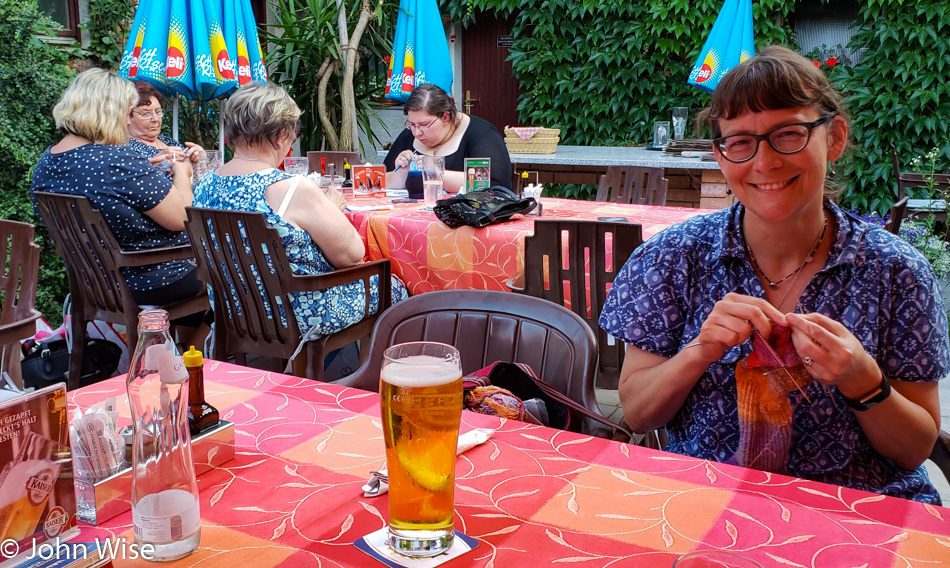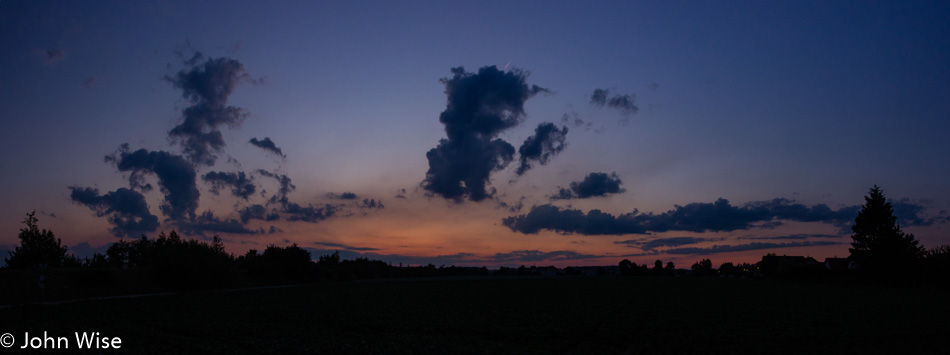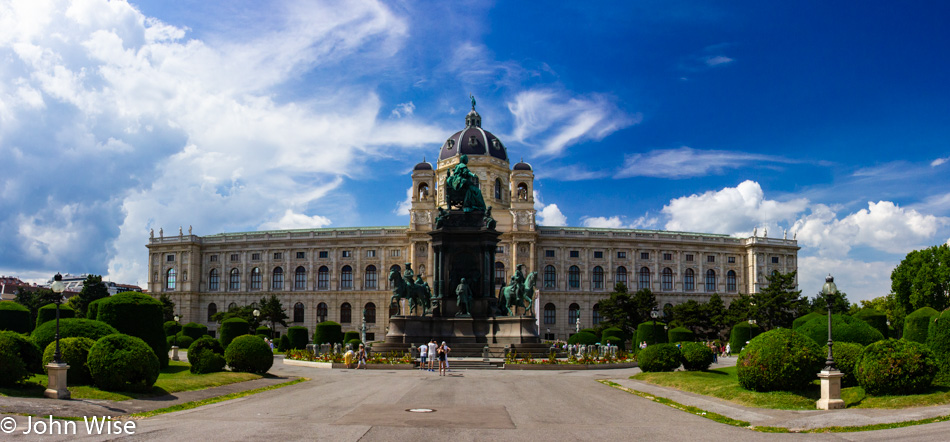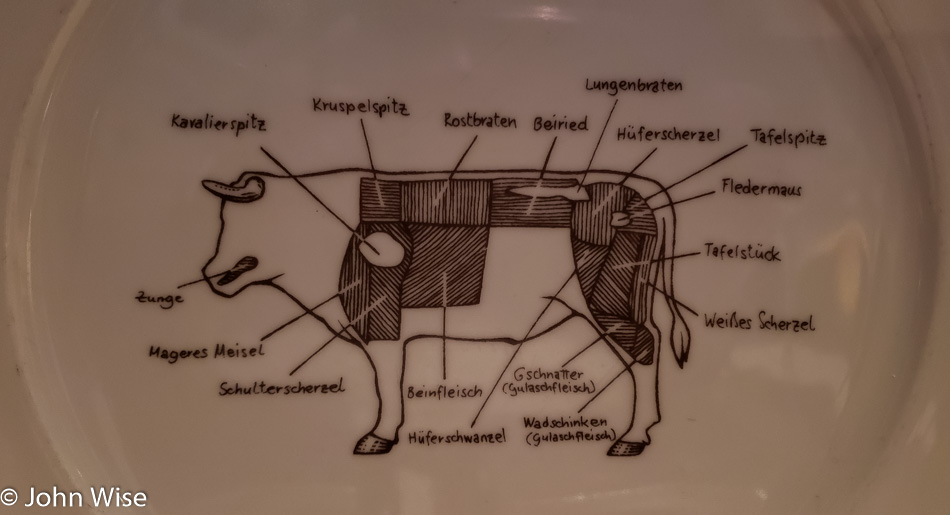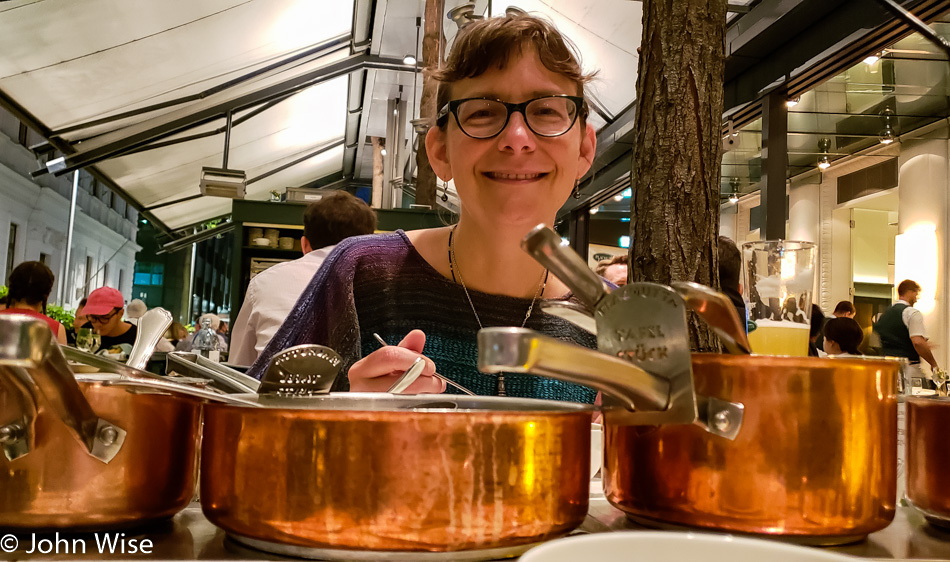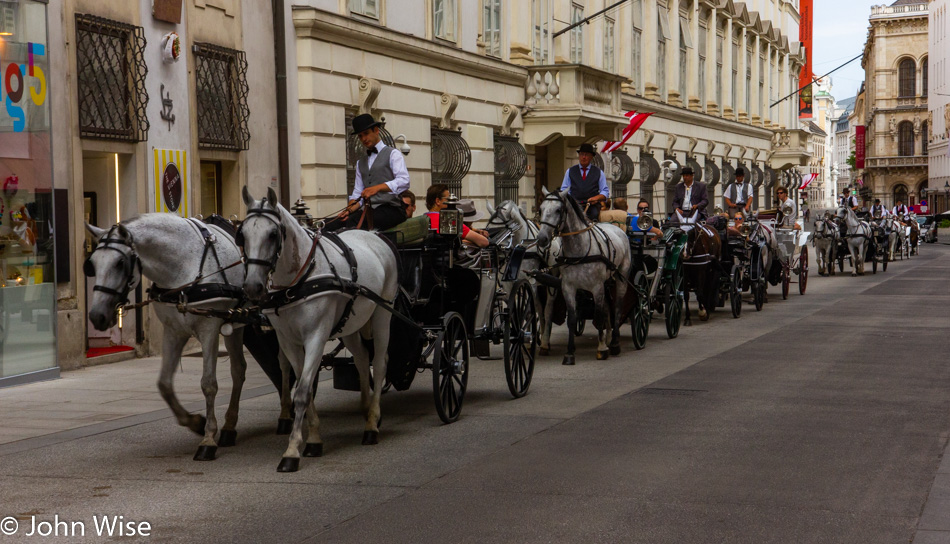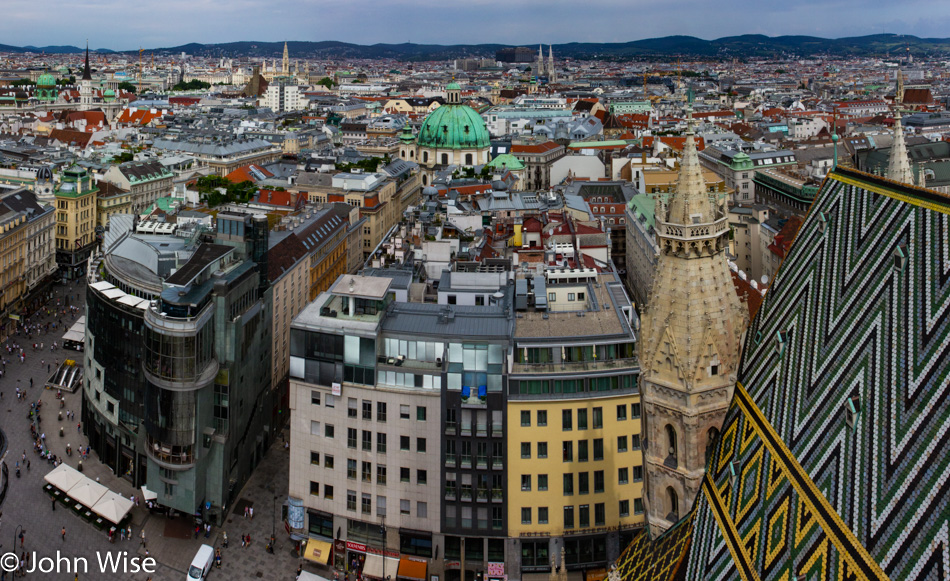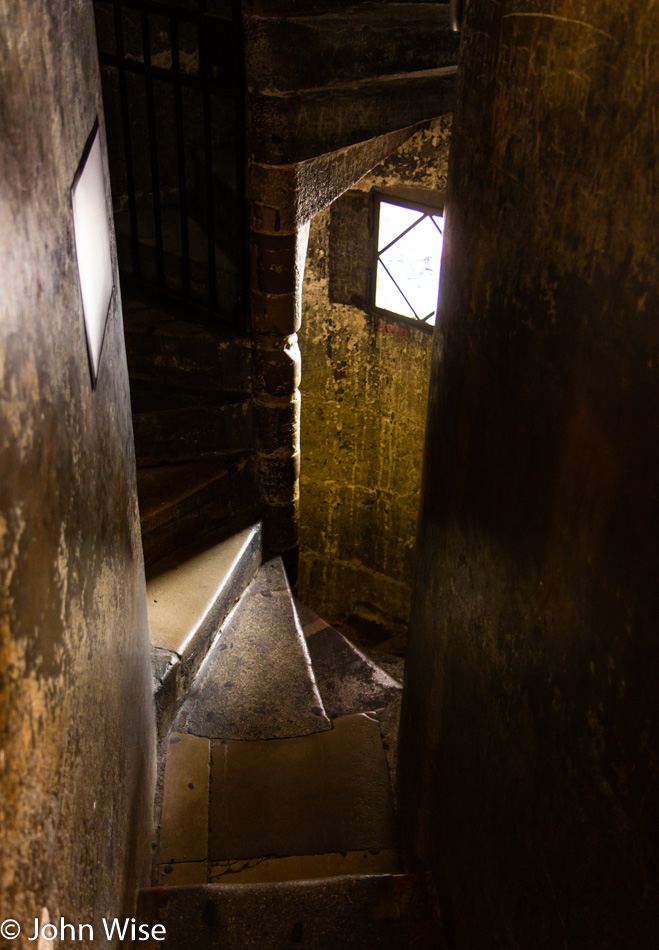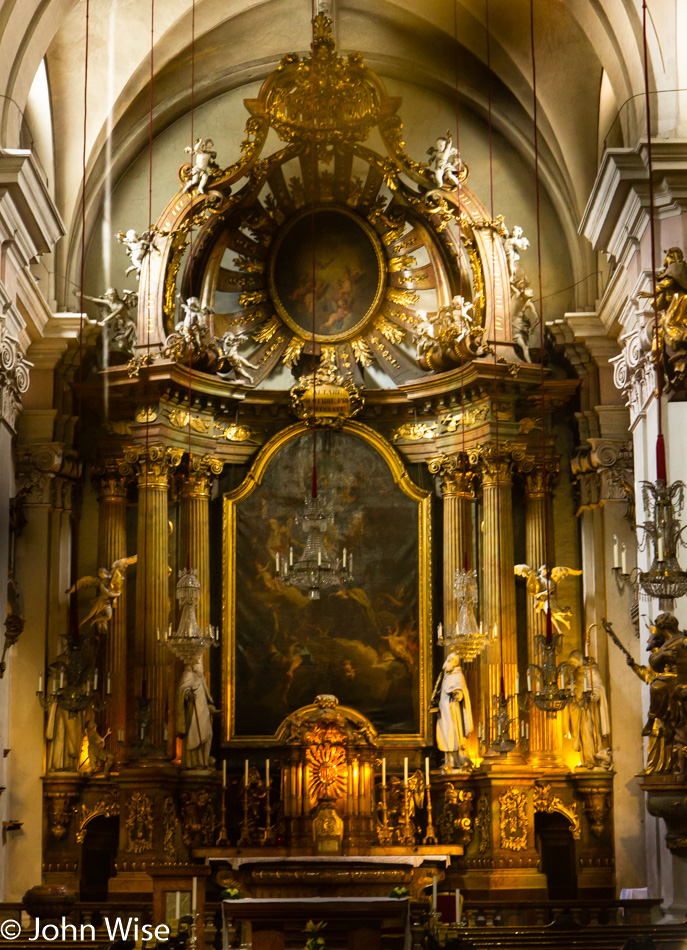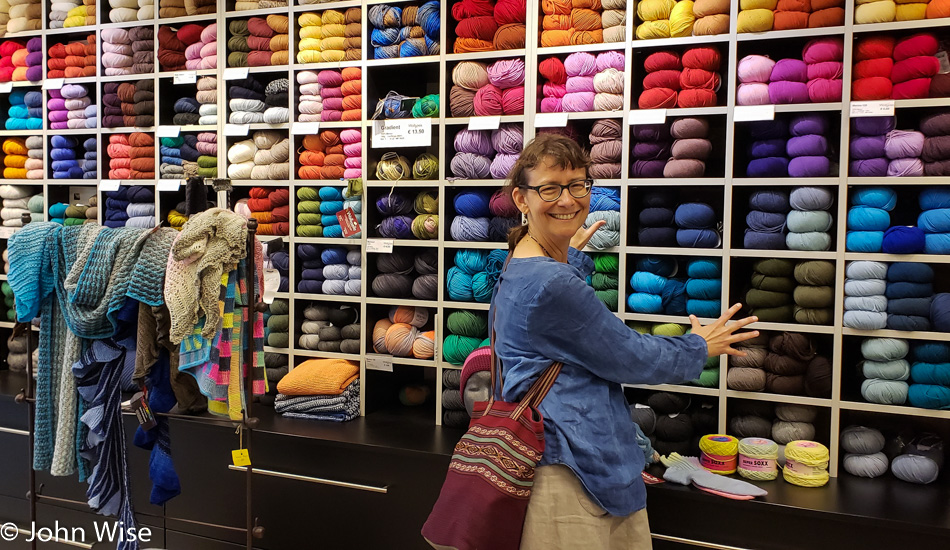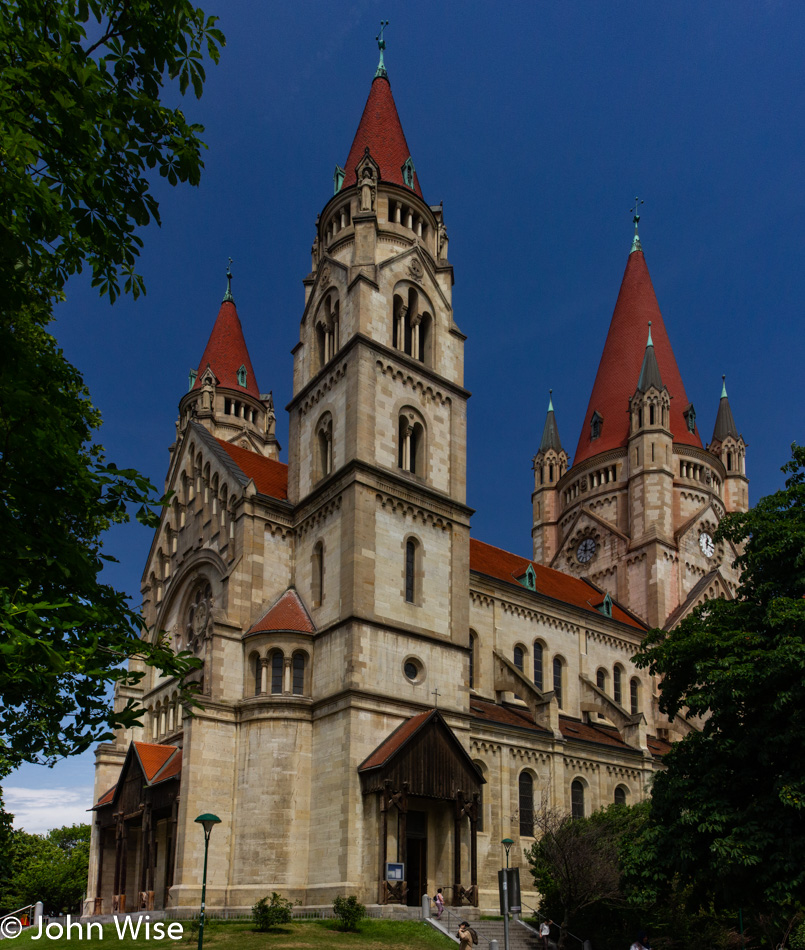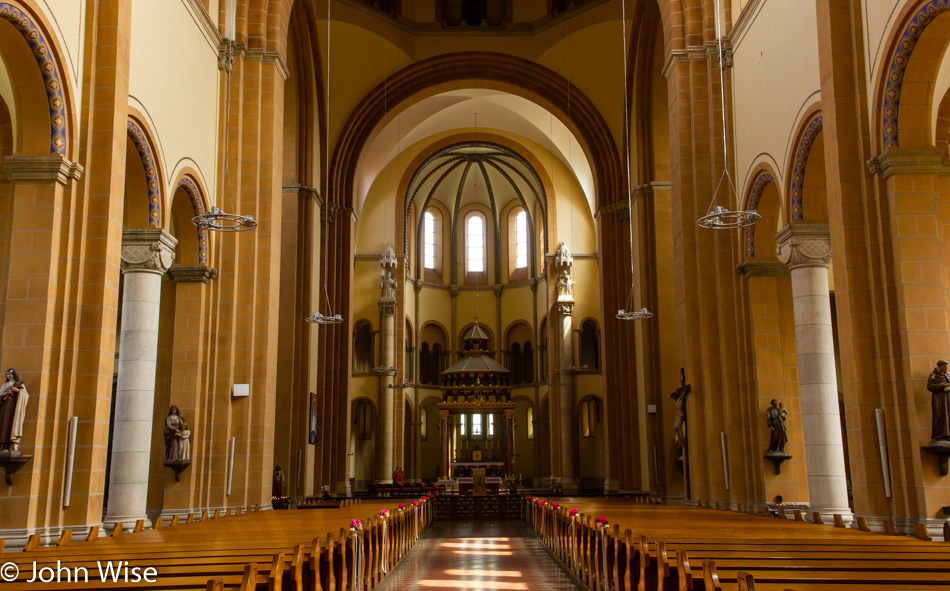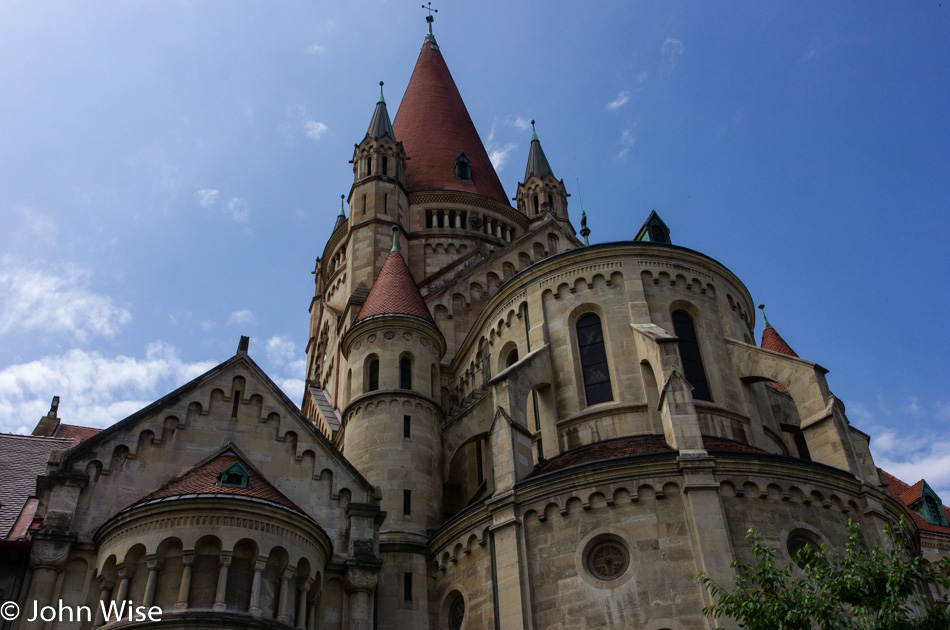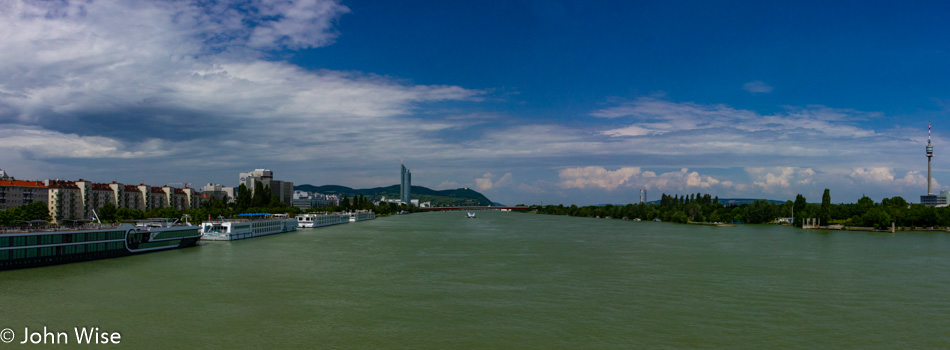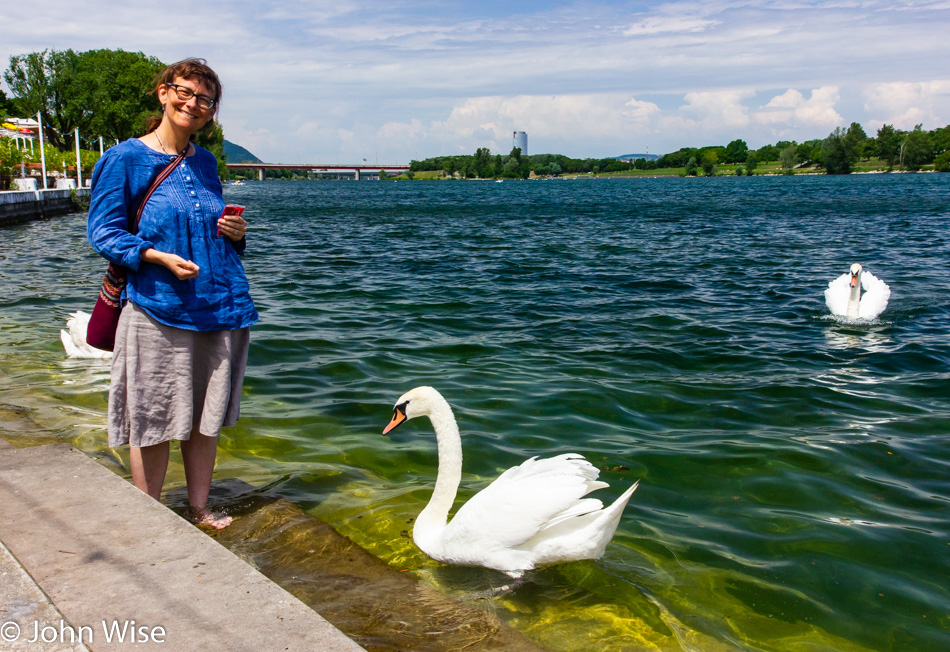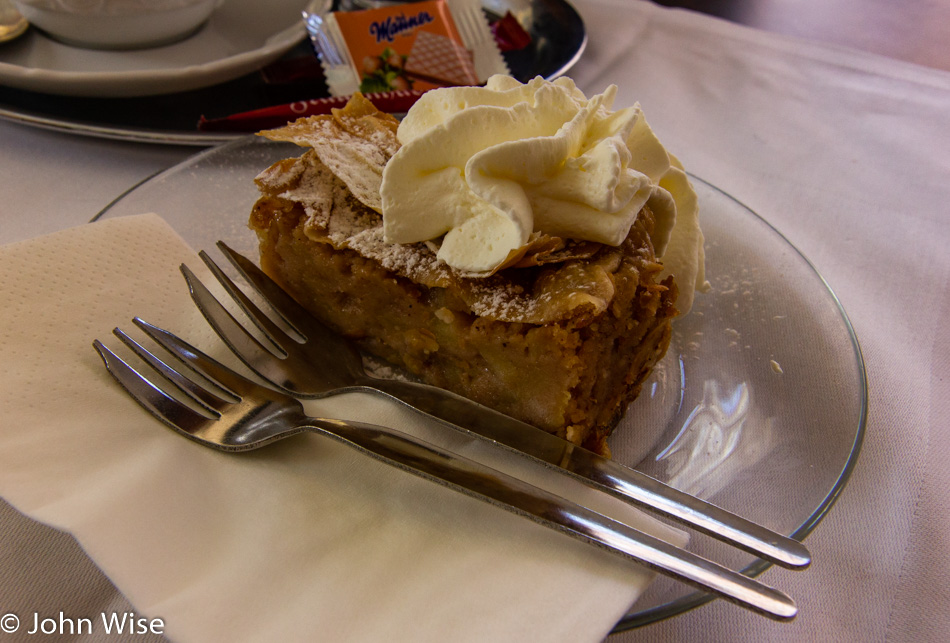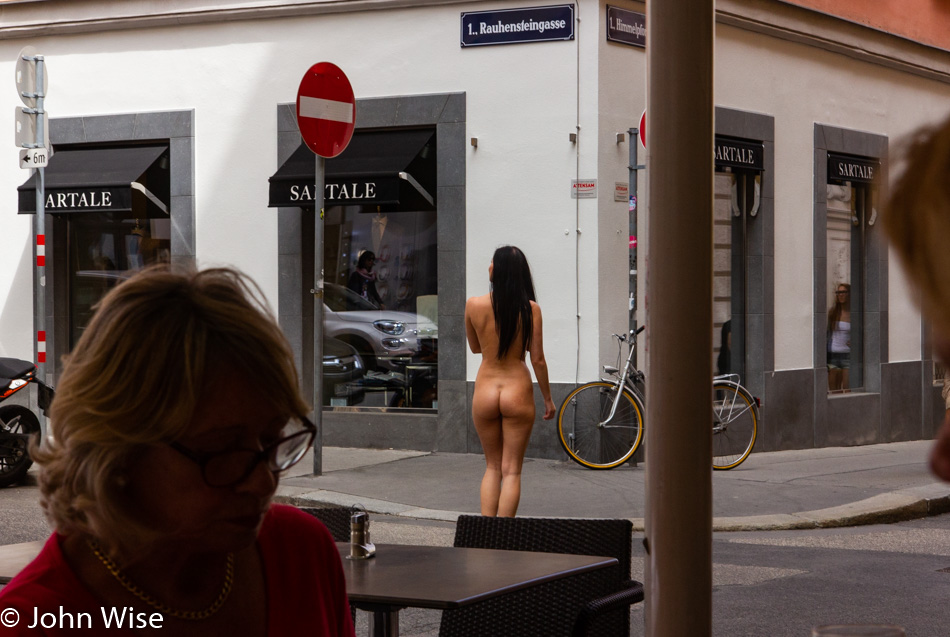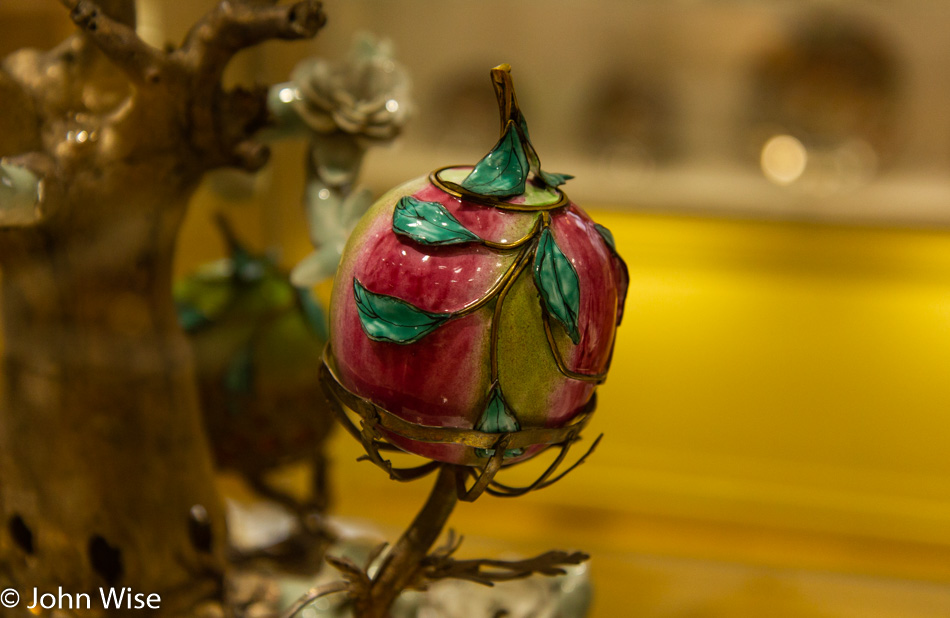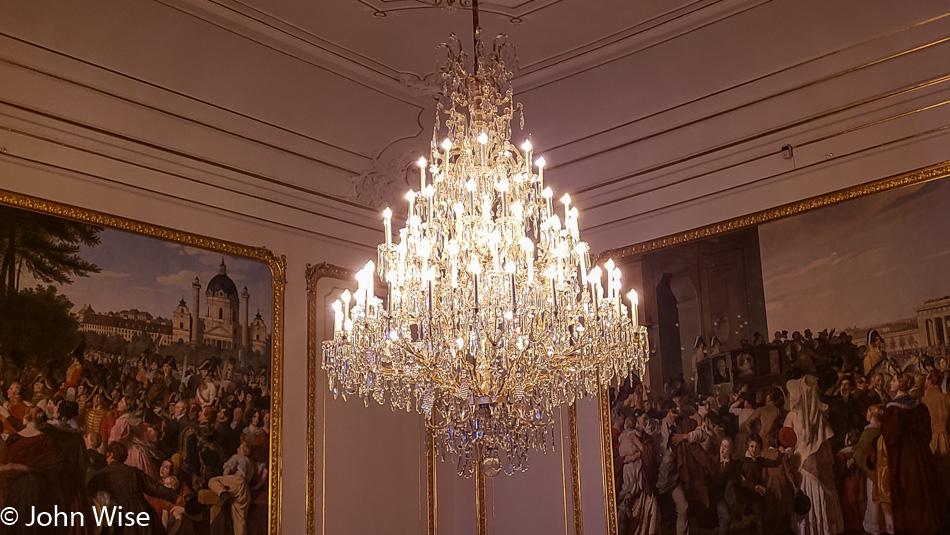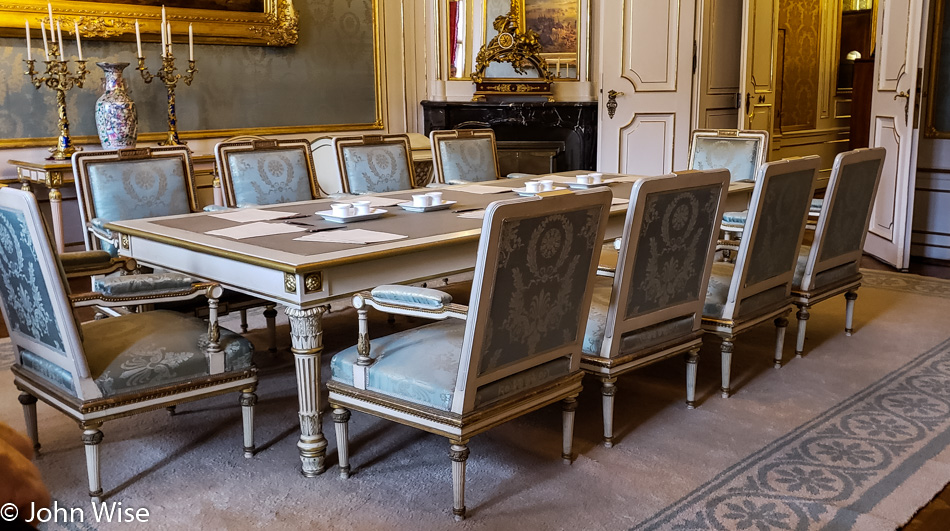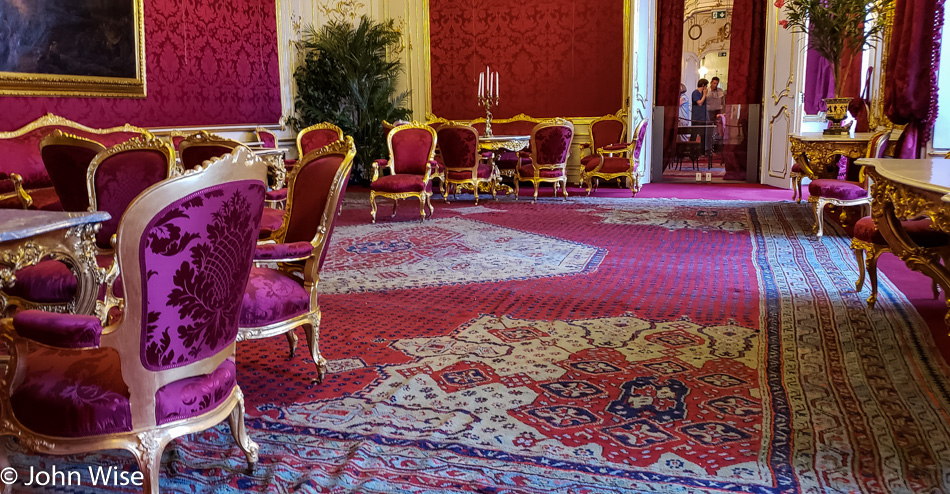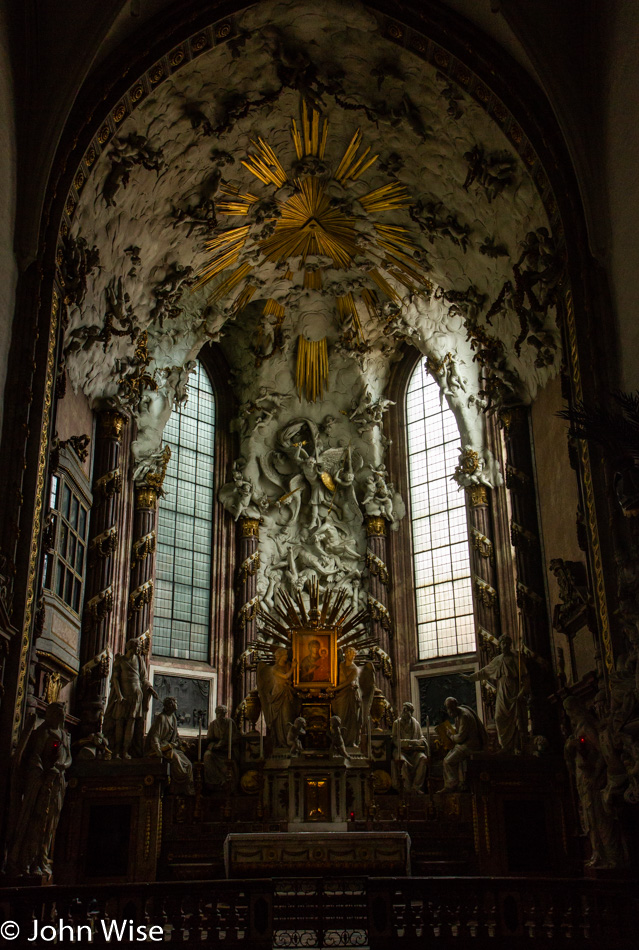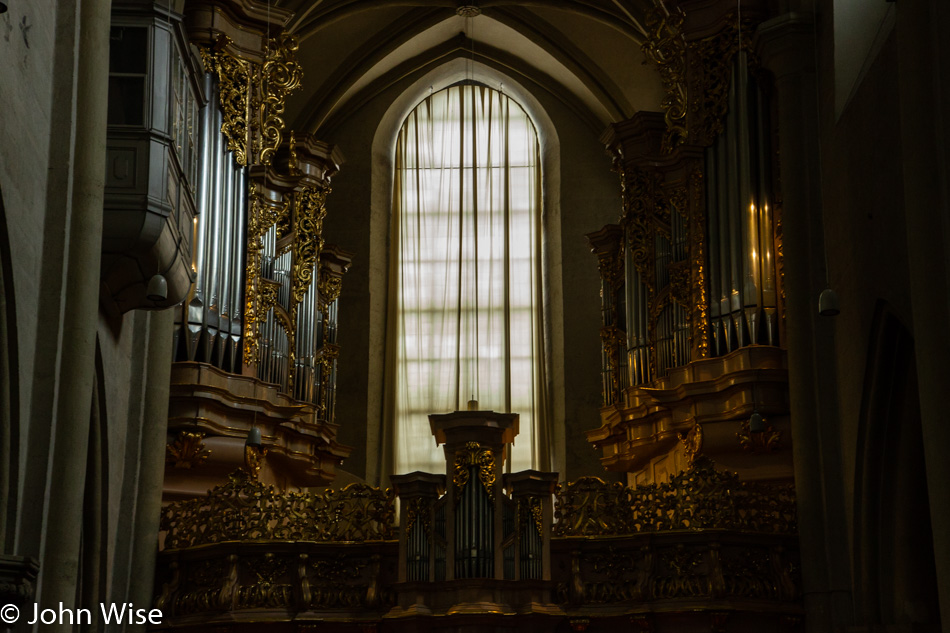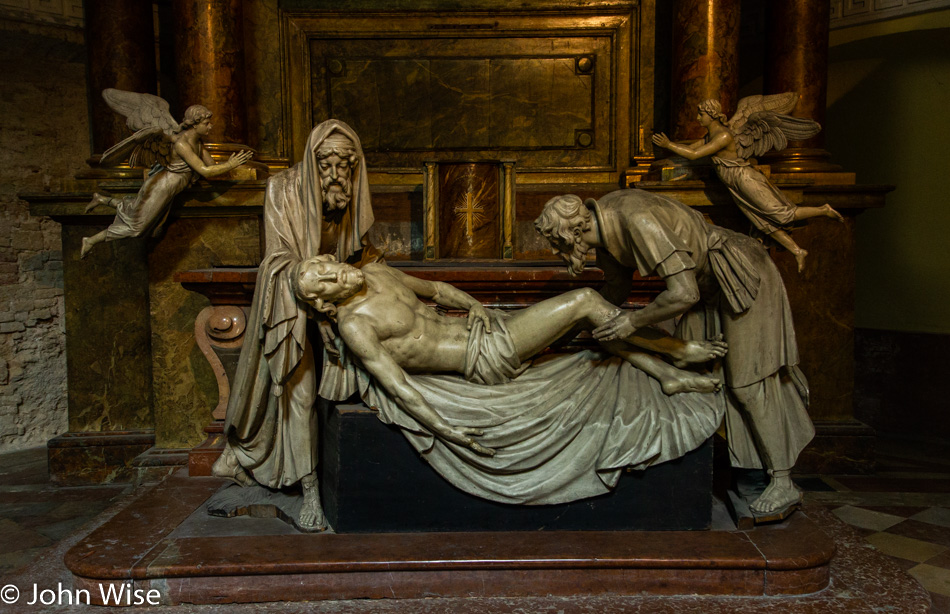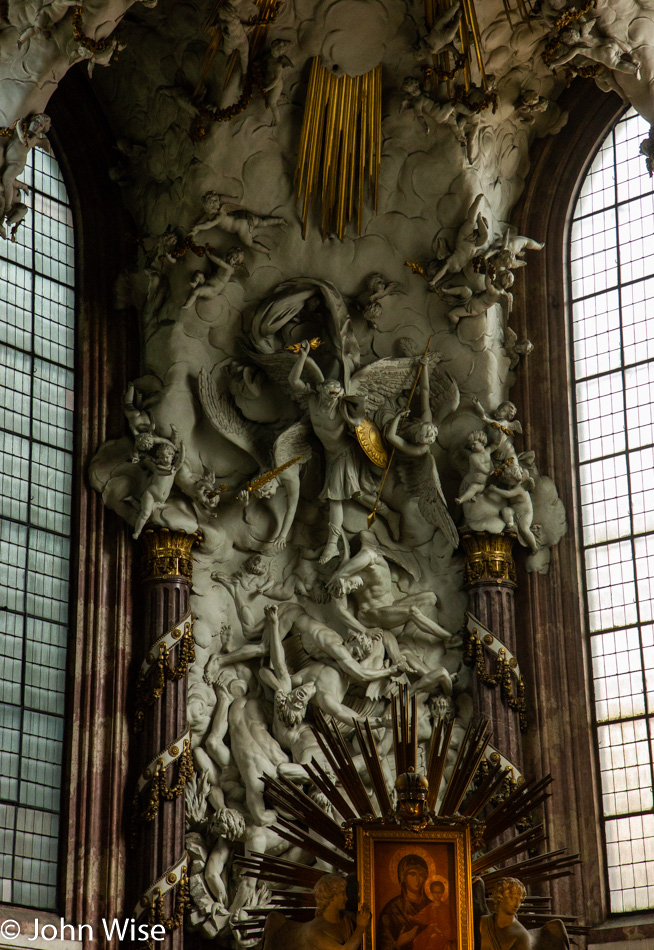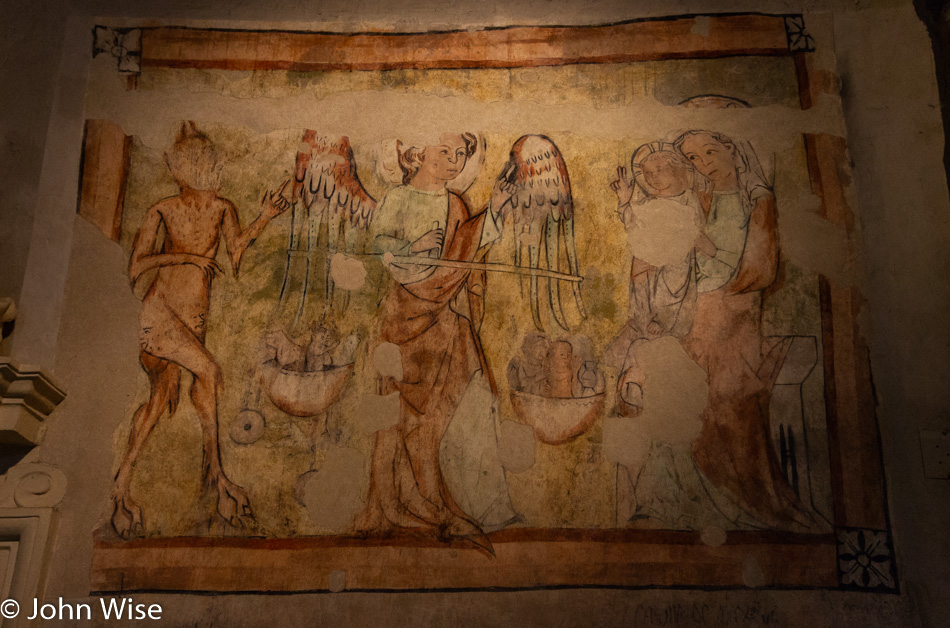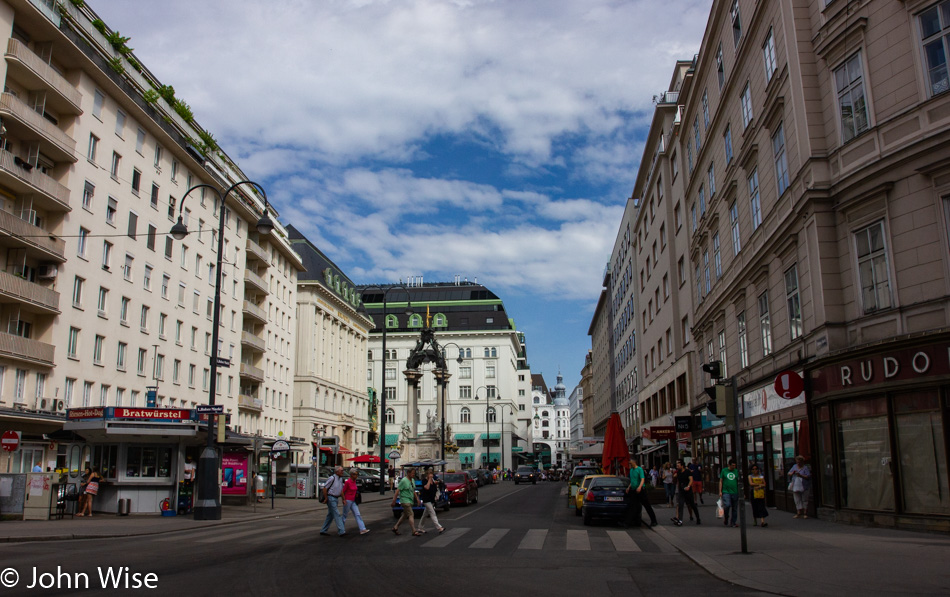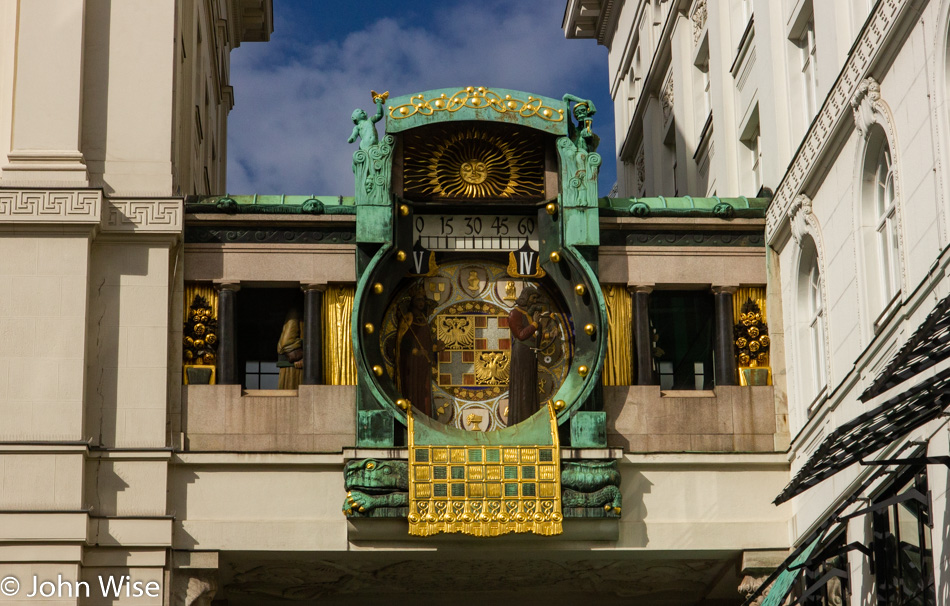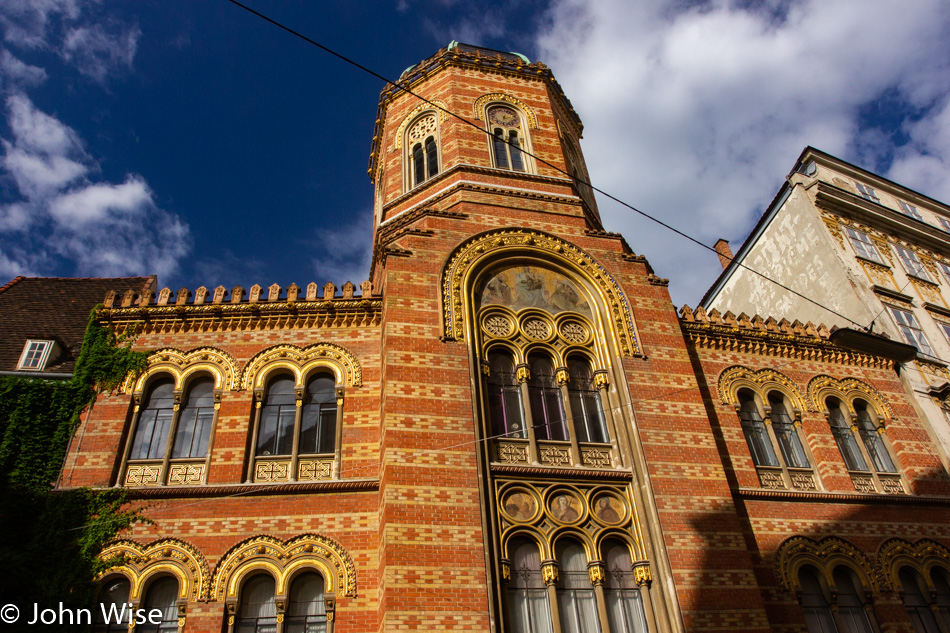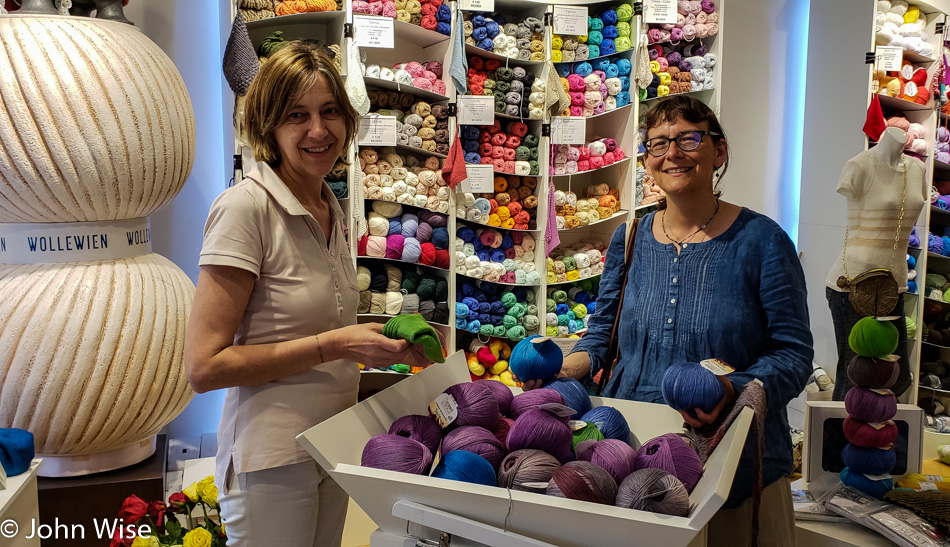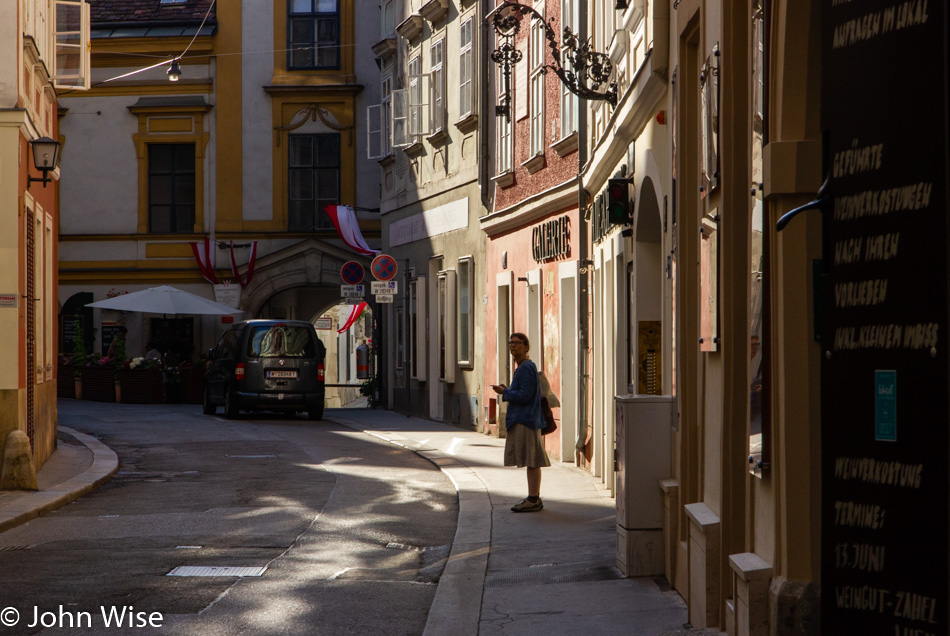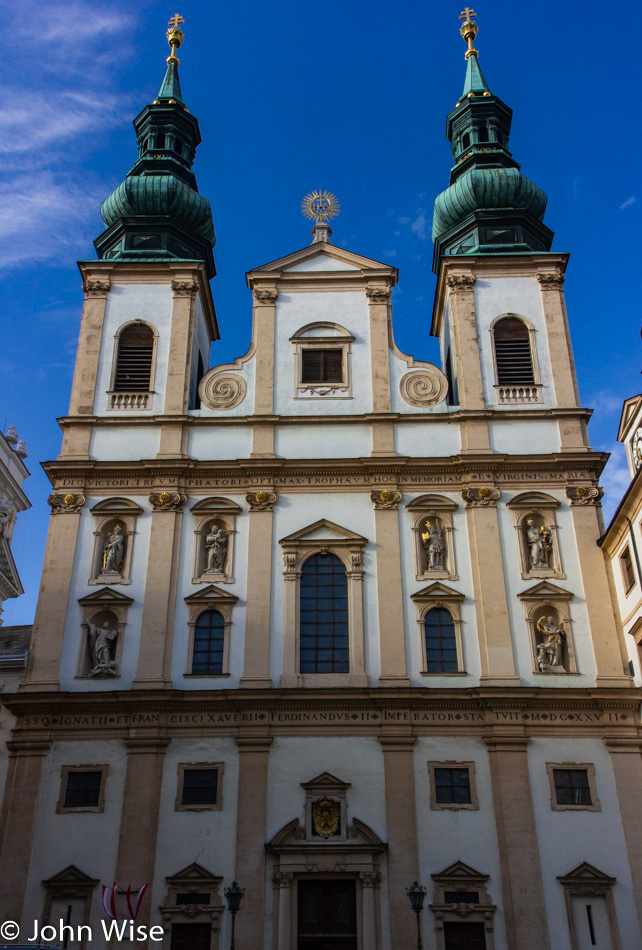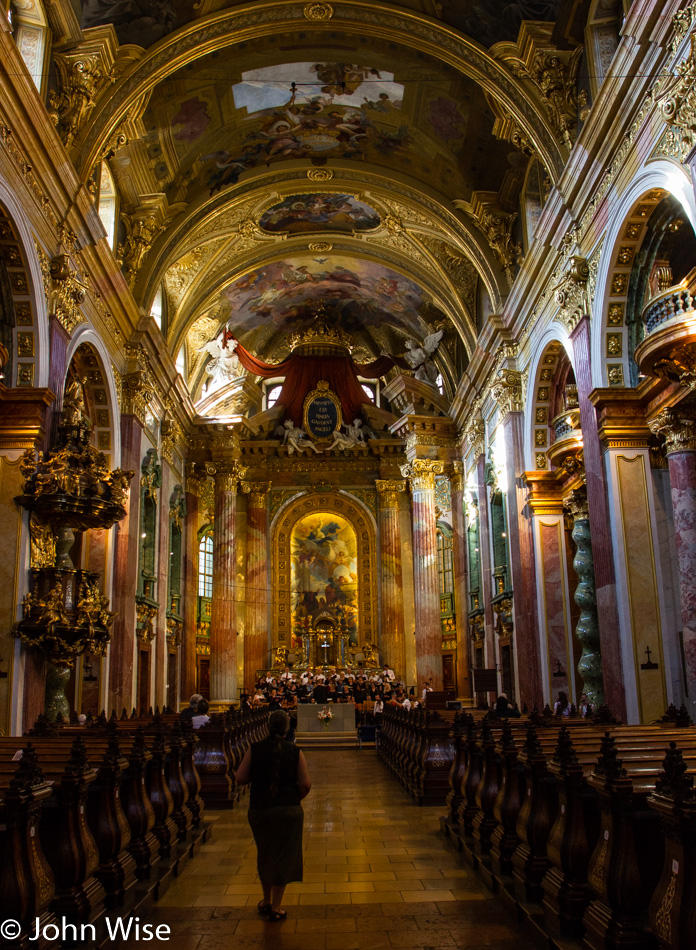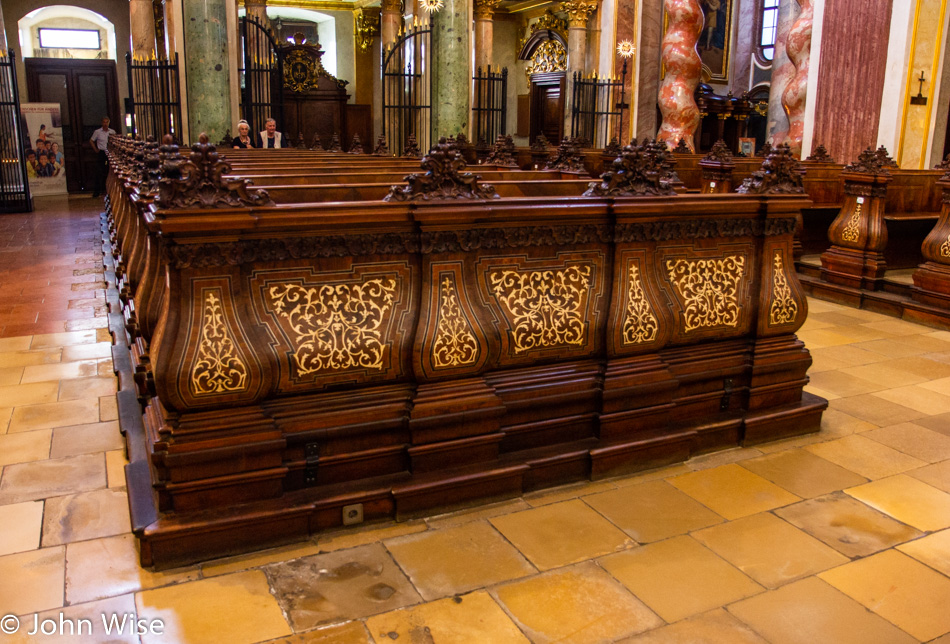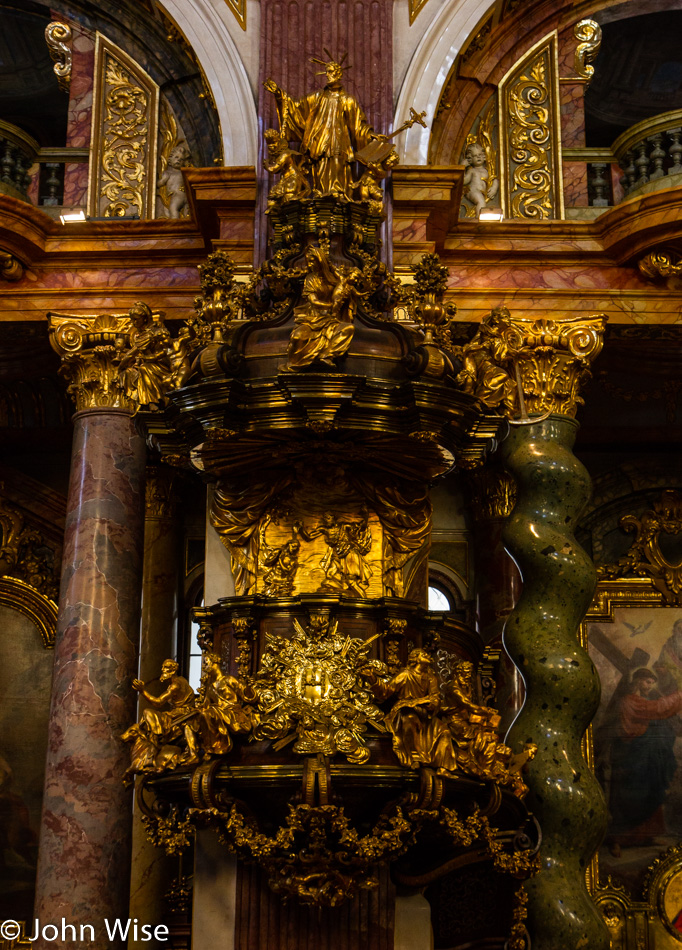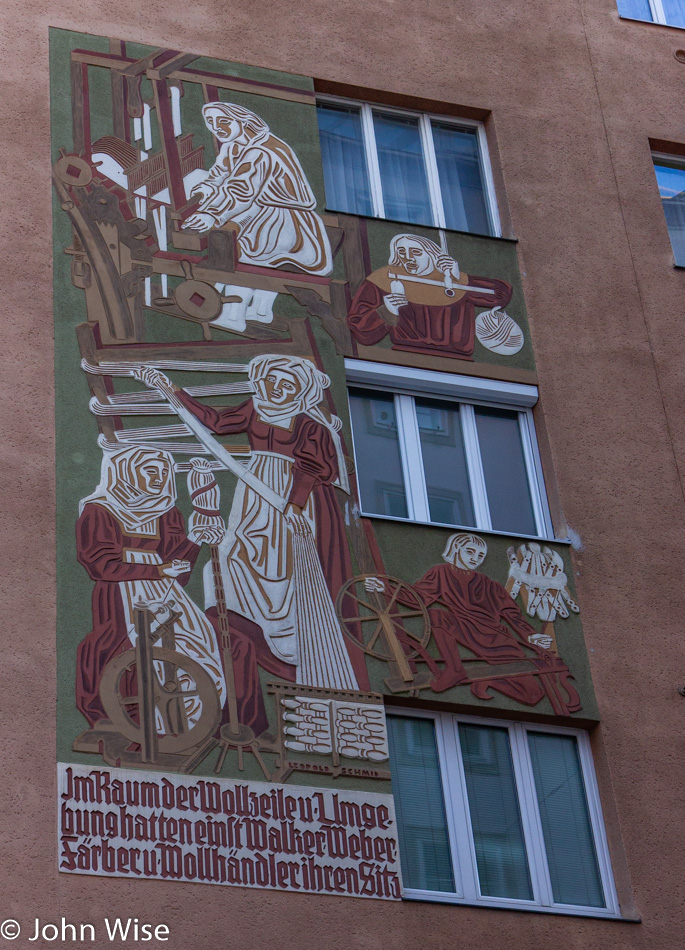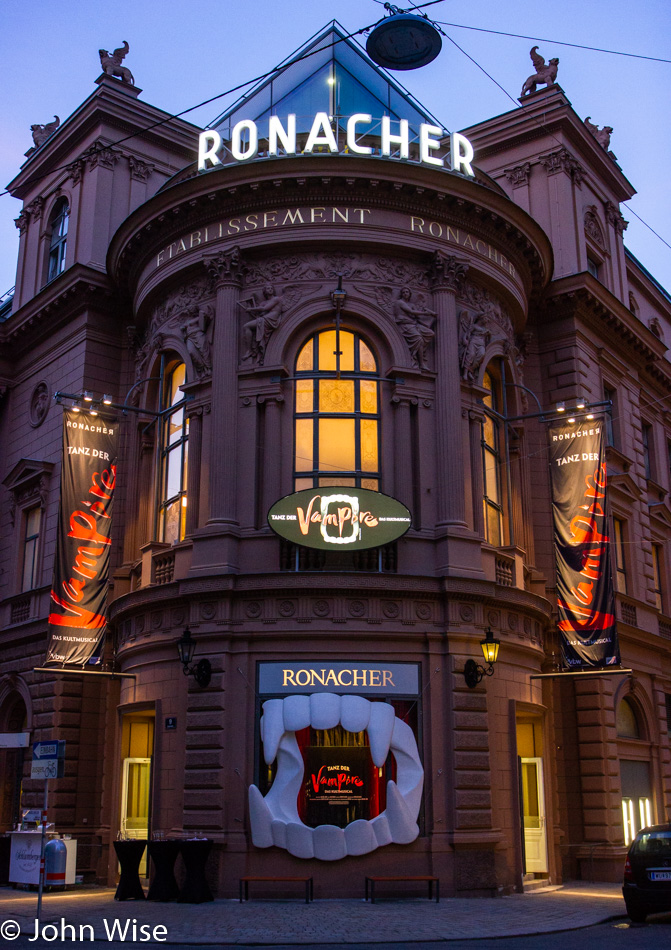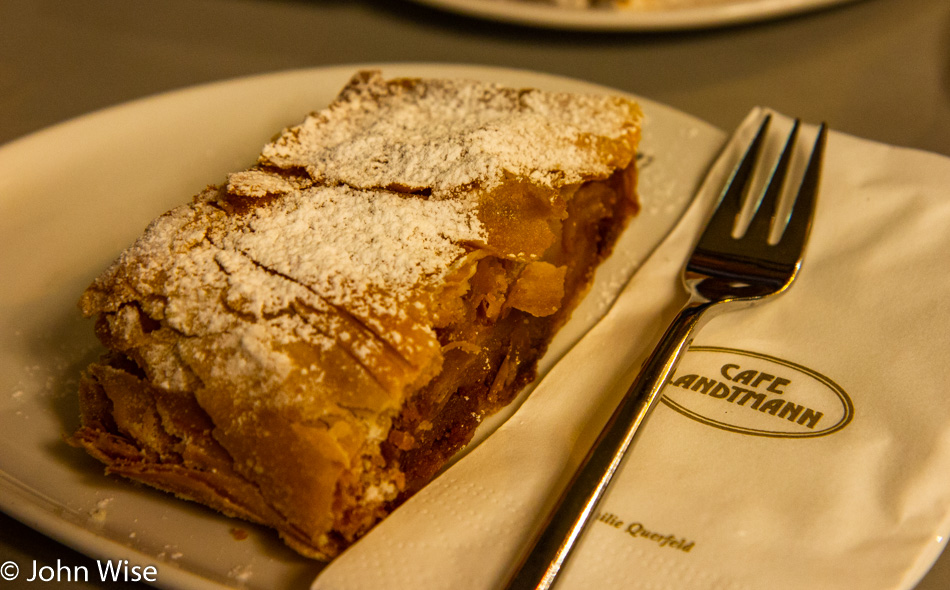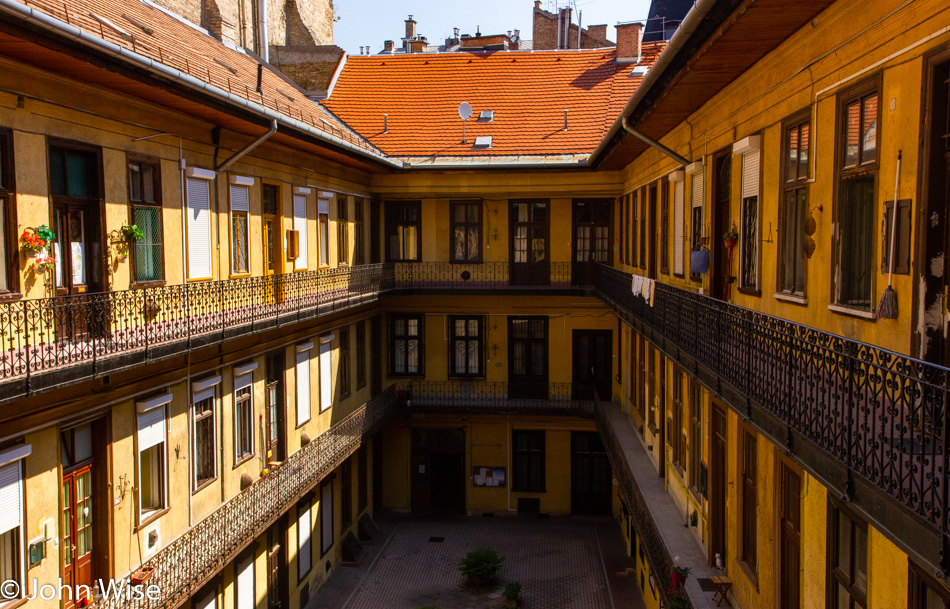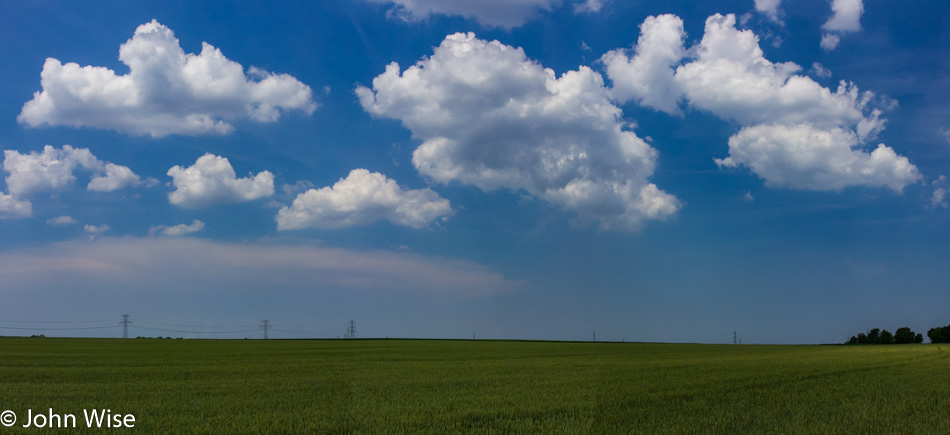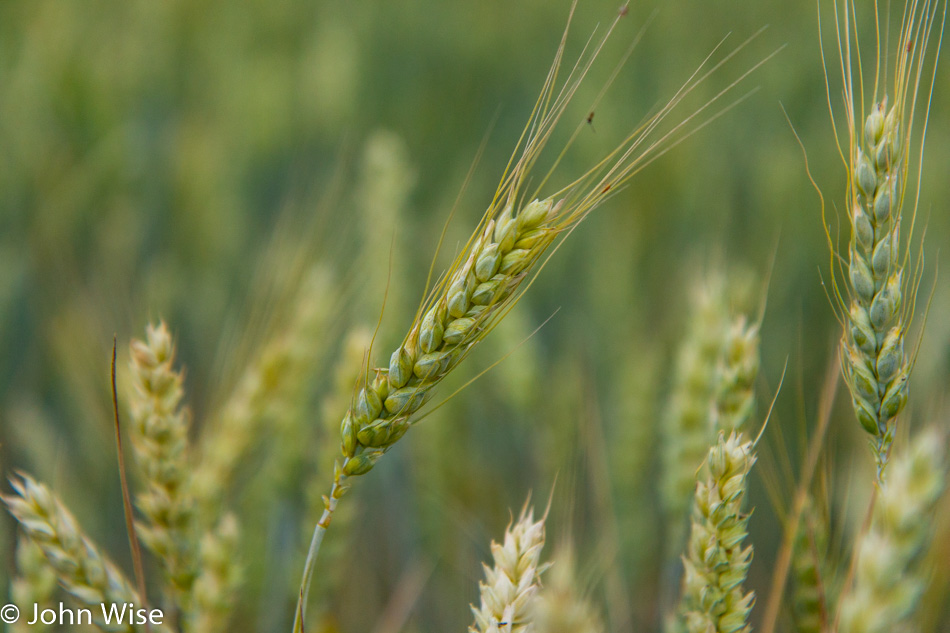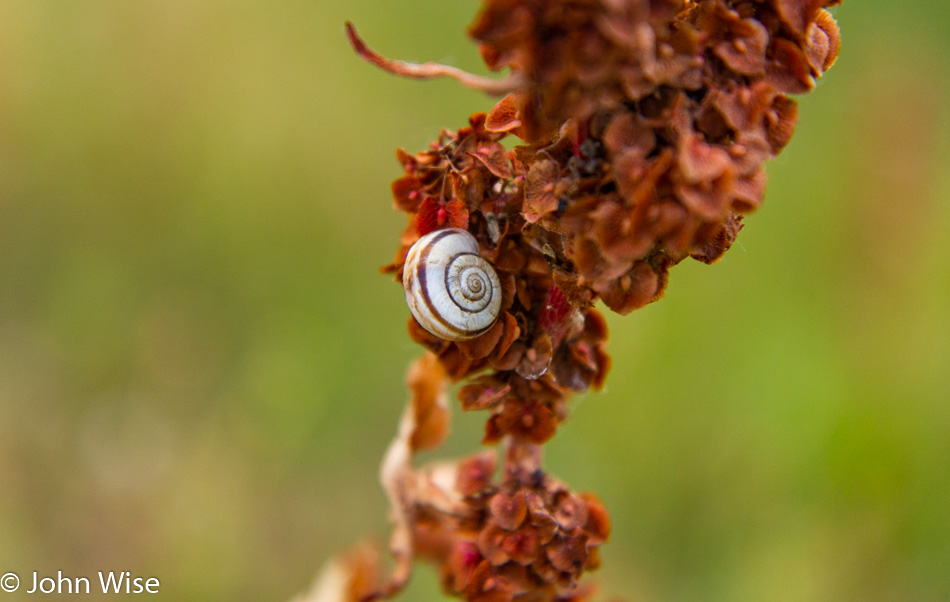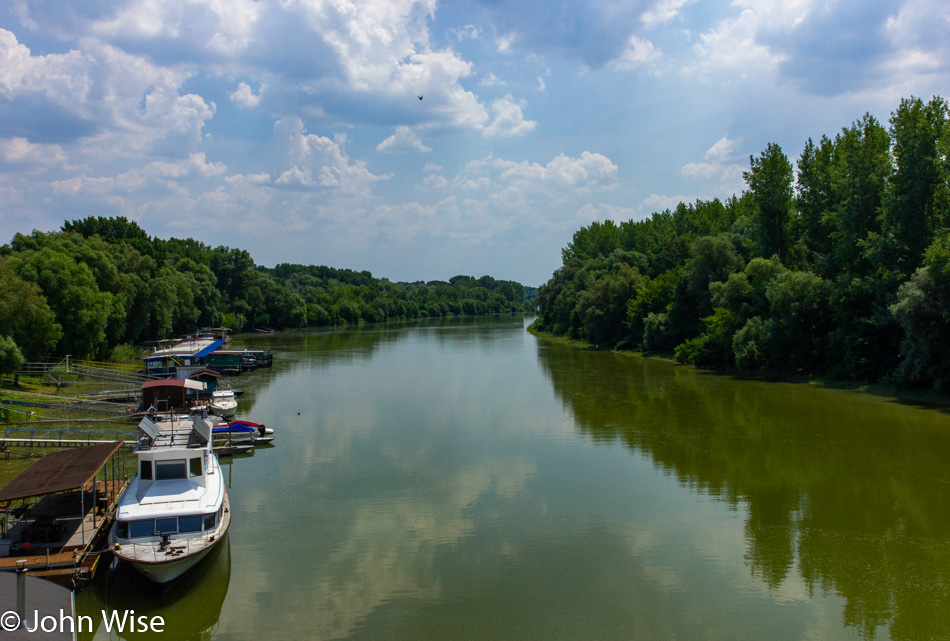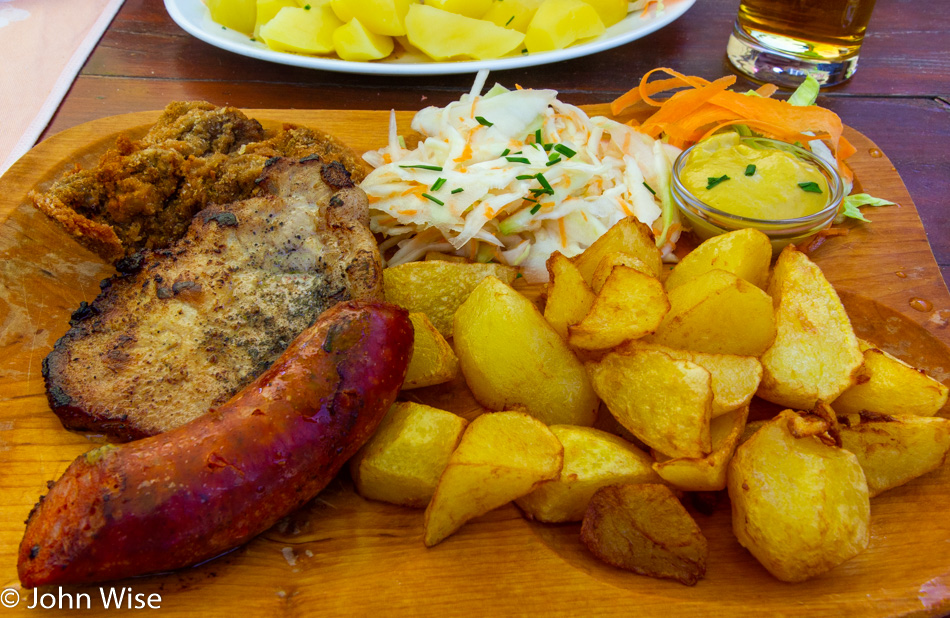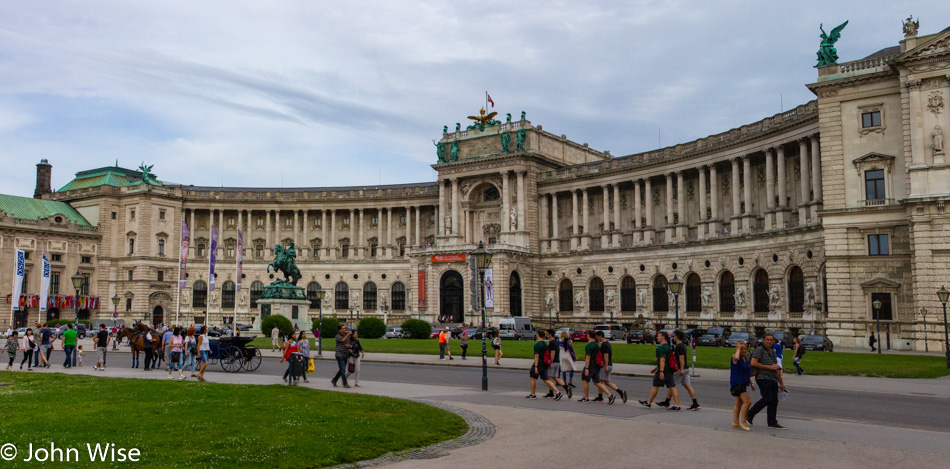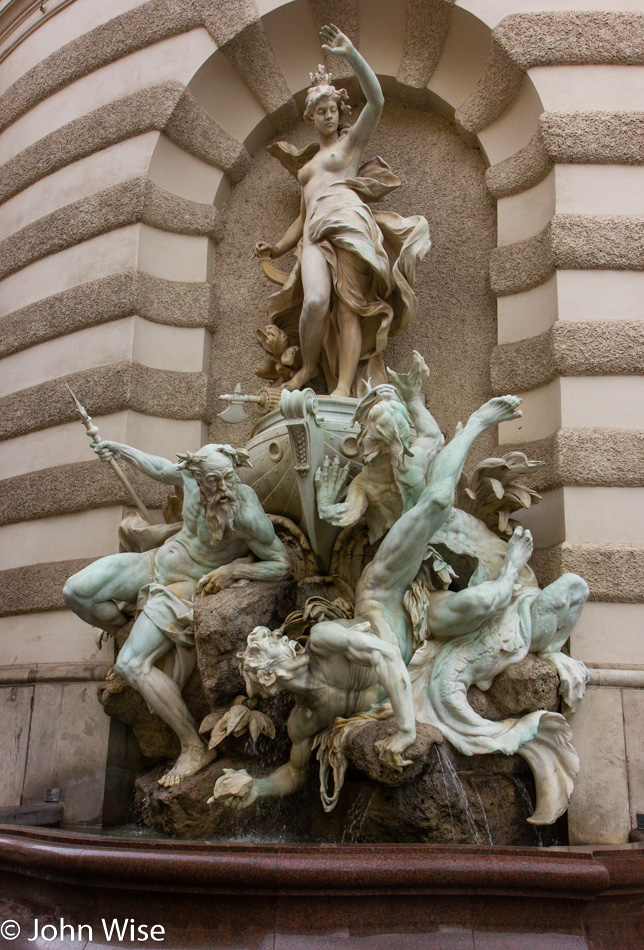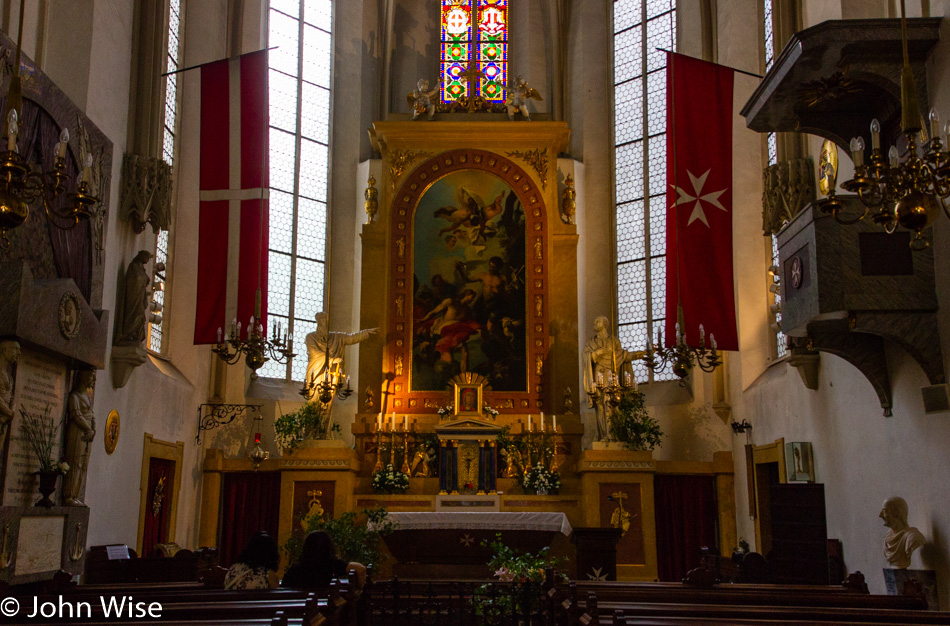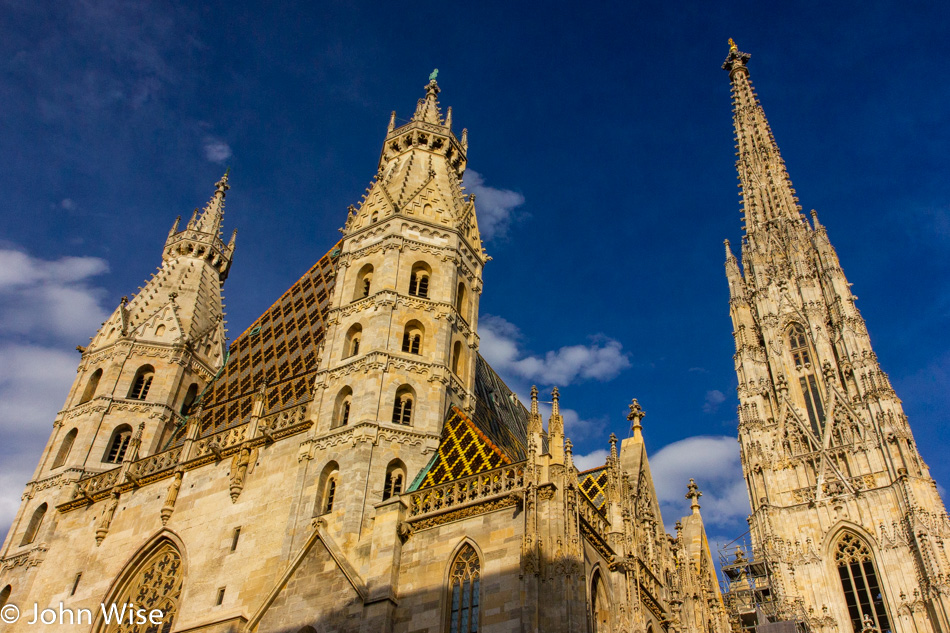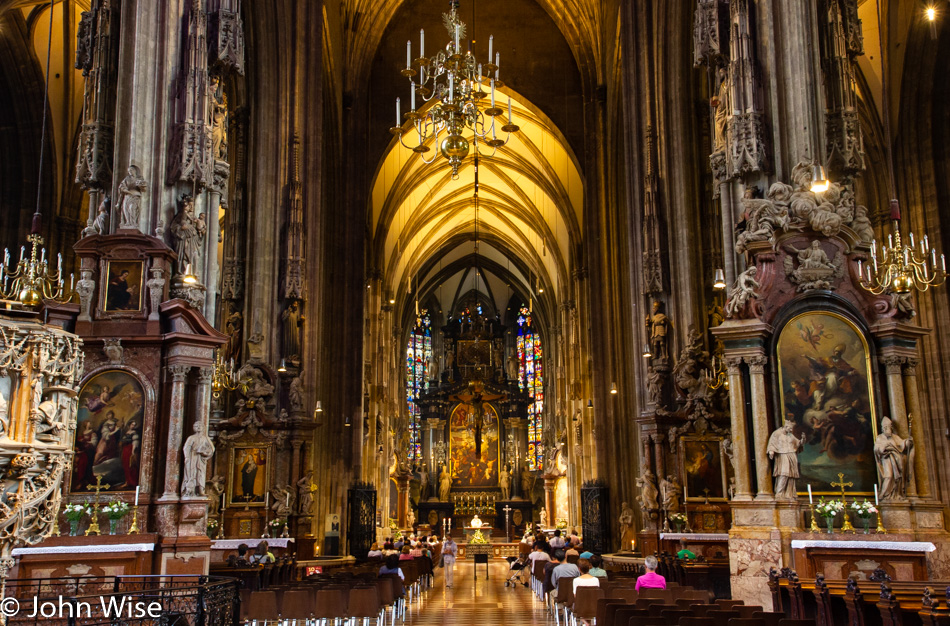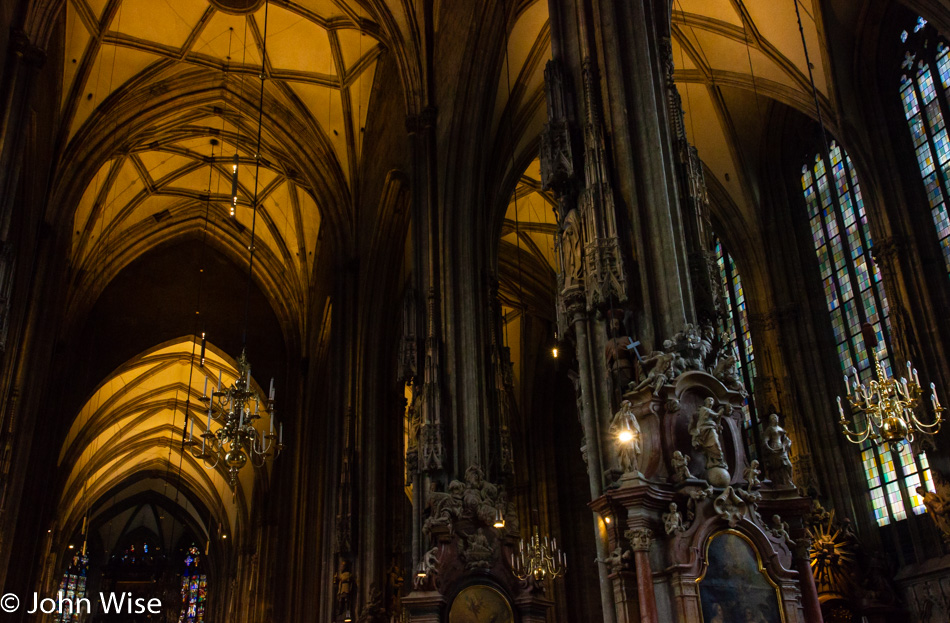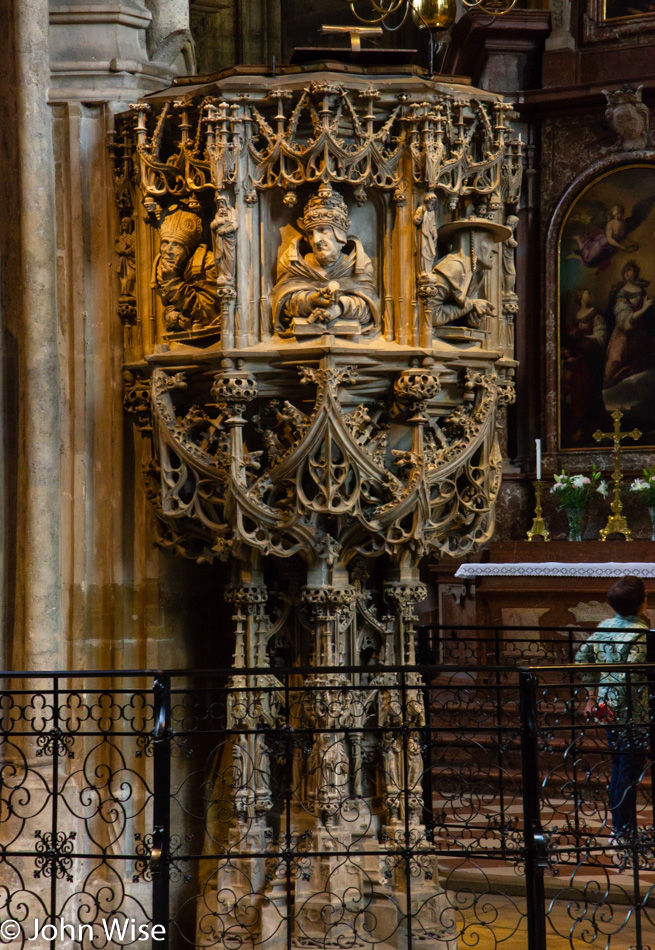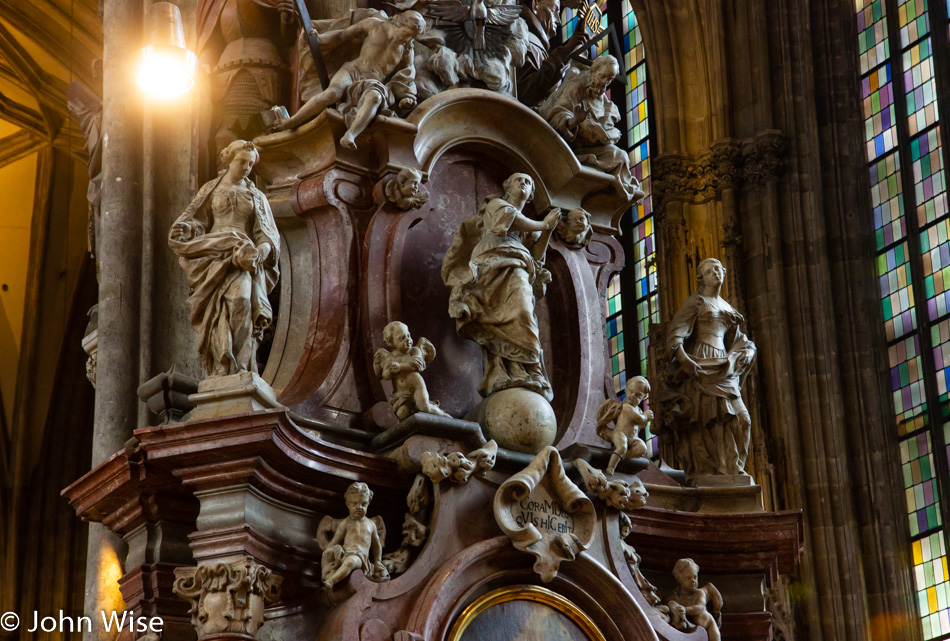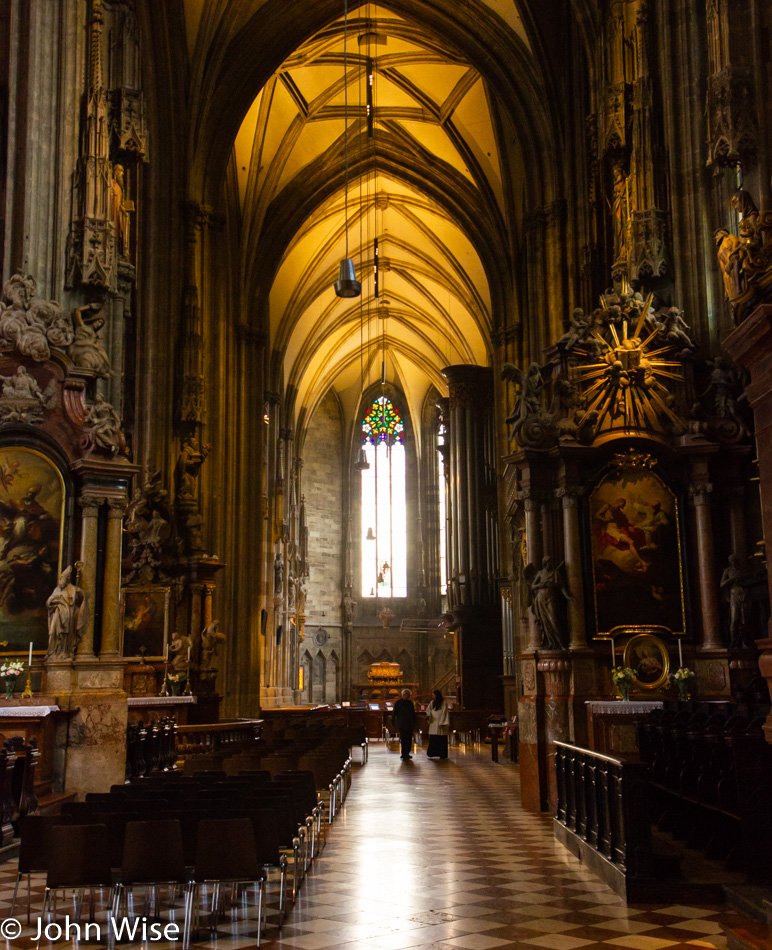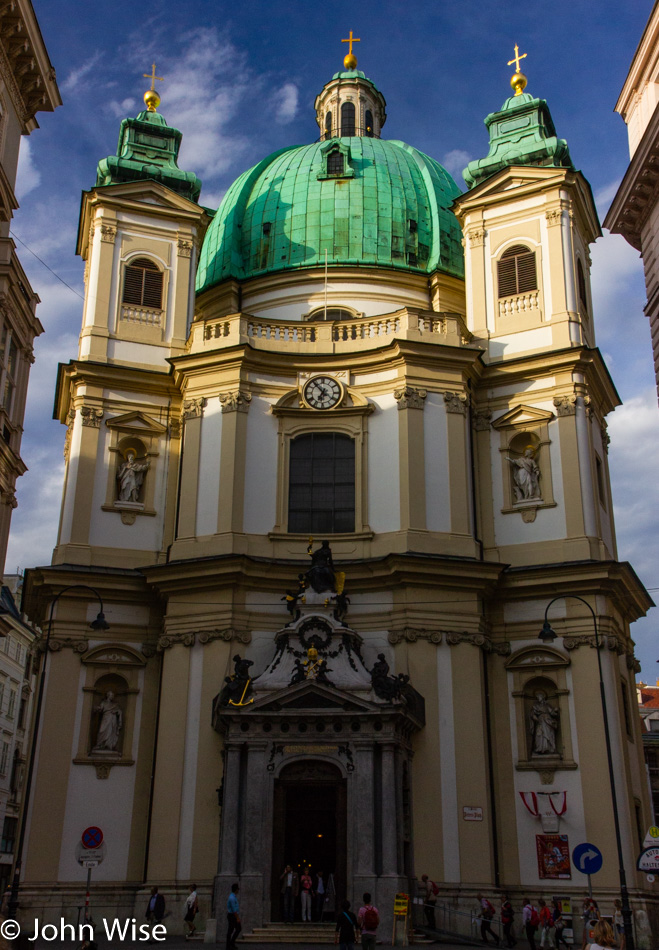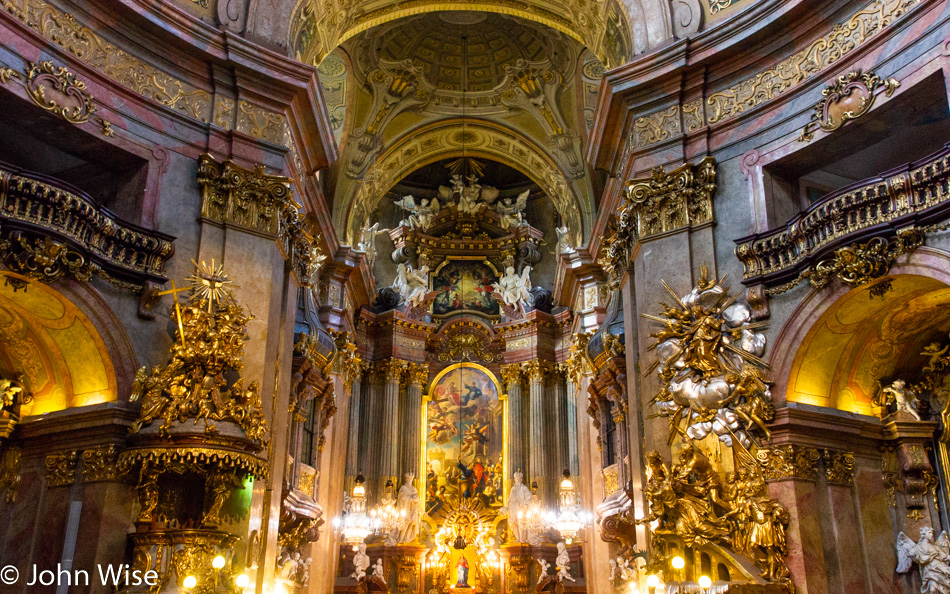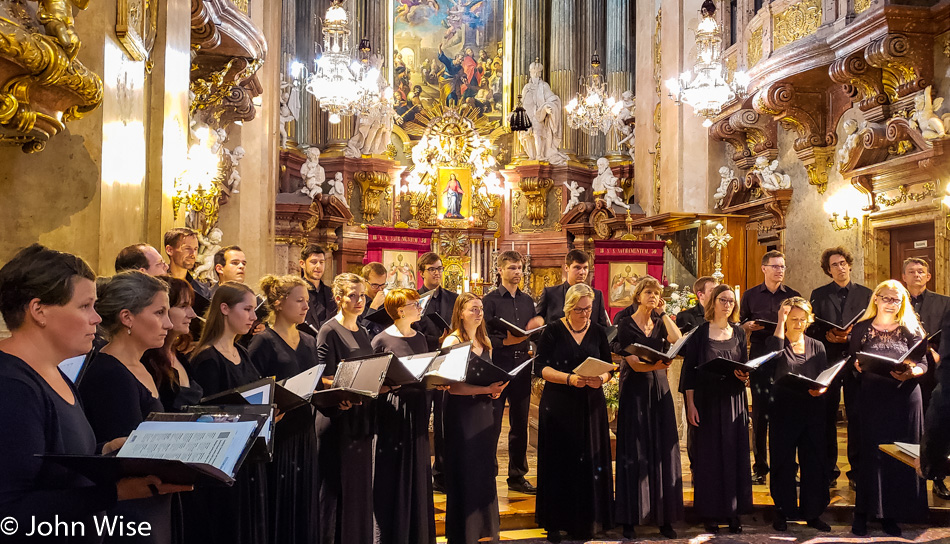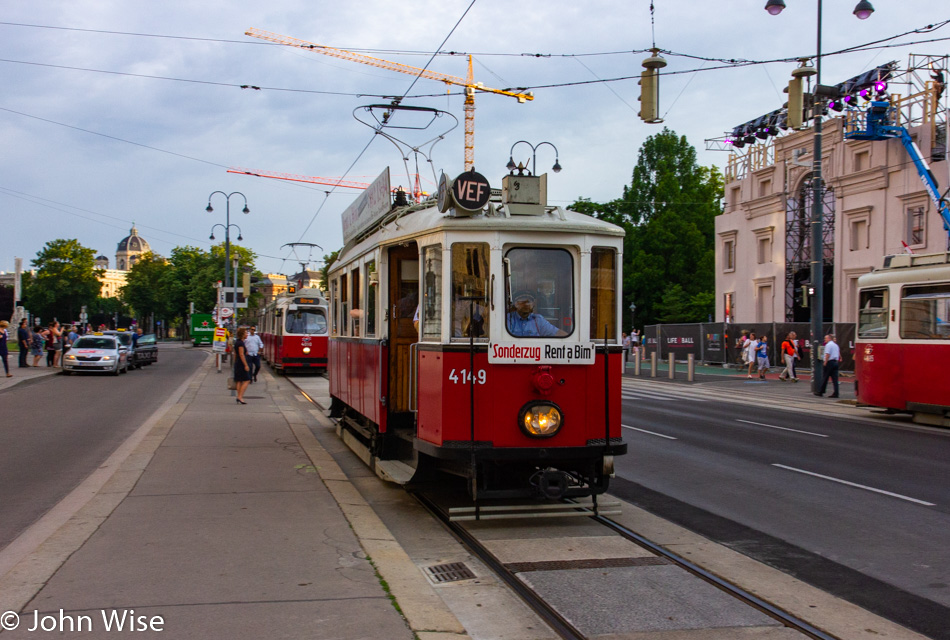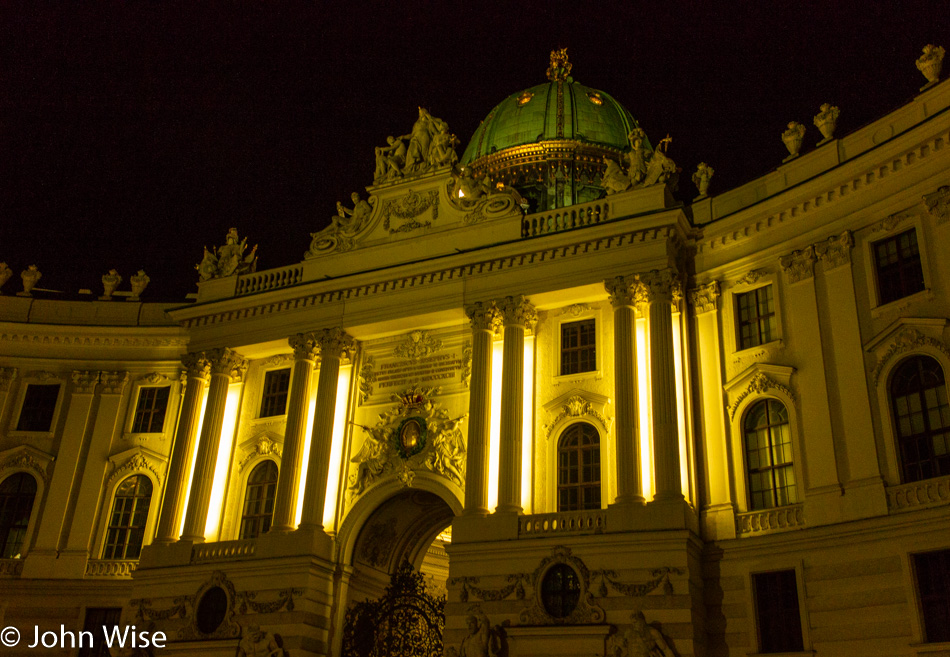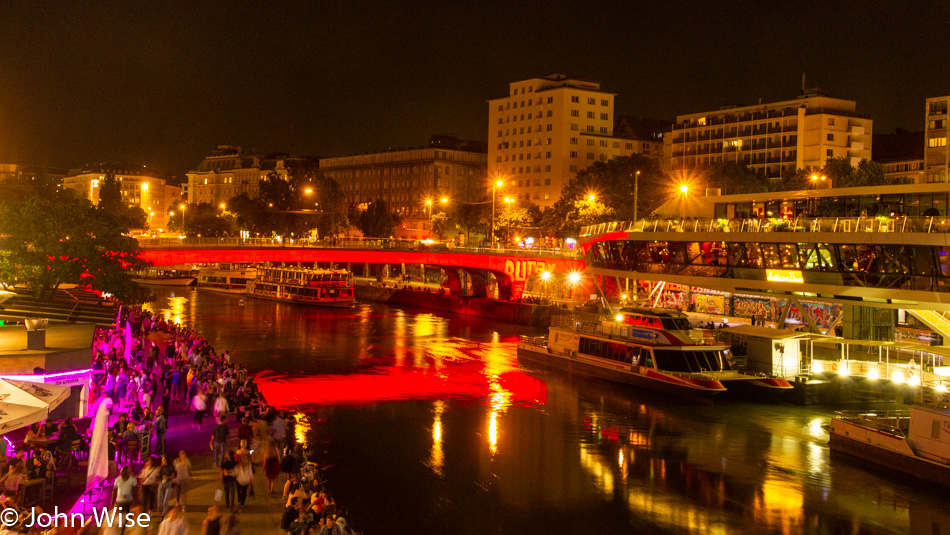
The oppression of blue skies and a still-functioning camera to take photos and go out to explore yet another city while on vacation is taking its toll on my stamina. How much fun during the long days of summer is anyone supposed to be able to enjoy? At least when we are in Oregon during the late fall or early winter, we have the excuse to stay in for some nesting because the weather laughs at our attempts to fight its ferocity, and we oblige it, else it may seriously smite us in our stupidity to tempt it. Reluctantly we have entered Salzburg and will go forward into the day with the hope of rain and an abysmal experience, so I can lament at least one day how horrible our vacation of perfection turned and crapped on us.

Hmmm, it’s probably getting old if you’ve read enough of my blog entries about how “Two Frankfurters are better than one,” and my entry about Caroline riding the wild wiener when she mounted the kid’s corn dog ride, or just days ago when she kissed the cock and I captioned it with, “Just the tip.” So, I’ll try to lay off the innuendo here and just let the picture talk for itself about how much my wife enjoys a good wurst (wiener for English speakers). Maybe you’ve picked up on that this was our breakfast today?
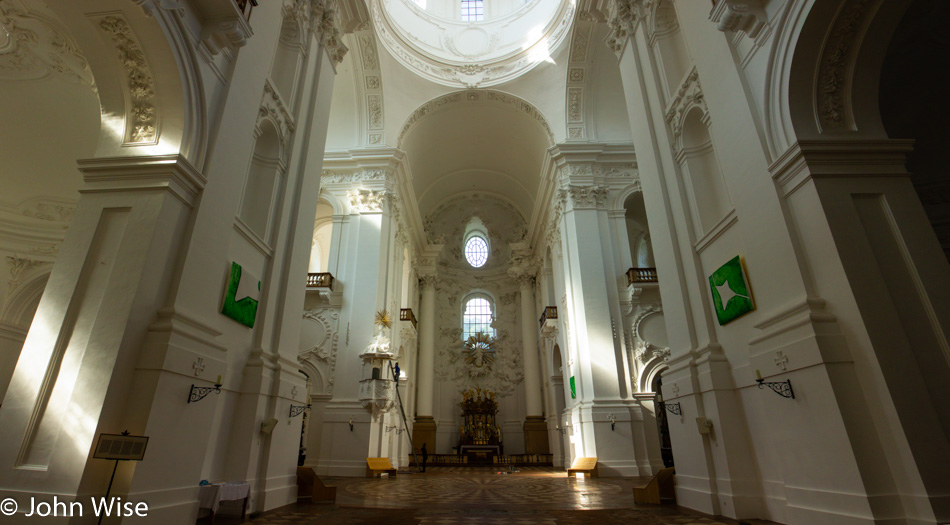
A good church always makes a great accompaniment to breakfast, and why should today be any different than all the previous days so here you go, this is the Kollegienkirche or Collegiate Church, should the English name suit you better. Either this is under renovation and yet still open to the public, or it is the most sparsely decorated church in all of Europe.

Out of one church and into another. We may not have even been outside for two minutes before we were able to take refuge from the sun in another ancient marvel of architecture. This is the Salzburg Cathedral, which is the third iteration of a church that has stood on this spot since at least 774. In 1181, the first (maybe second) church burned down, and then in 1614, the current cathedral was started.

We found some graffiti on a wall, and the tag read, “Wolfgang Amadeus Mozart was baptized here on January 28, 1756.” At first, I thought it was fake news, so I went to Wikipedia, and it said the same thing, but someone told me that they only post fake truths, so I went to a library and checked an encyclopedia from the 1960s back when truth and information were real and sure enough it too said Mozart was baptized at the Salzburg Cathedral a day after he was born. BTW, do you really believe that I went to a library to confirm in an encyclopedia the truthiness of a story?

I’m tortured by the church with its open policy of allowing me to take more photos than one should post in a single blog entry. How am I supposed to choose but a few to accompany my writing when every corner and arch demands greater scrutiny? Then it occurs to me that maybe I’m merely looking at Trompe-l’œil style painting and that the technique employed here is just so great that I believe I’m looking at windows and into a dome. That old question of perception versus reality rears its ugly head.

Back during World War II, a bomb crashed through the central dome seen here in its more beautiful restored state.

A close-up of the top of the dome as I struggle with getting the lighting right while hand-holding a camera where I should take hours and have the proper equipment to adequately do justice to such a magnificent building. Then again, these blog entries are more about the memories that are brought back to Caroline and me and hopefully some small amount of inspiration to those who find my blog and how they consider the way they travel. There are always ways to afford going places and more than enough time in a day to exceed your ability to experience a ton of things. Regarding paying for these types of travels, I like to share with those who wish they could travel like we do that it is simple, but some discipline is required.
First, you must set yourself the objective of doing something. Many have told me that they cannot afford a trip out of the country. If you can save $3.25 to $5 a day for a year, you can afford to go to Asia or Europe for a week to 10 days. Discount airline tickets, Airbnb or hostels, and street food are your friends. There’s no reason that a single person can’t travel to another country in this age for more than about $1250 ($3.25 a day saved for a year) to $1825 ($5 a day saved for a year).

You choose to stand atop the world paved in gold, or you suffer the indignity of living in the shadows unseen below the pawn. You need not be rich or privileged, but your perspective and “need” to be a winner or victim will play a role in where you perceive your existence. I cannot own the fortress that has been standing strong on the rock in front of me for almost 1000 years, but I can ascend its heights. First, though, I must believe I can do things outside my normal and then put into motion that ambition, followed by action that starts taking me there.
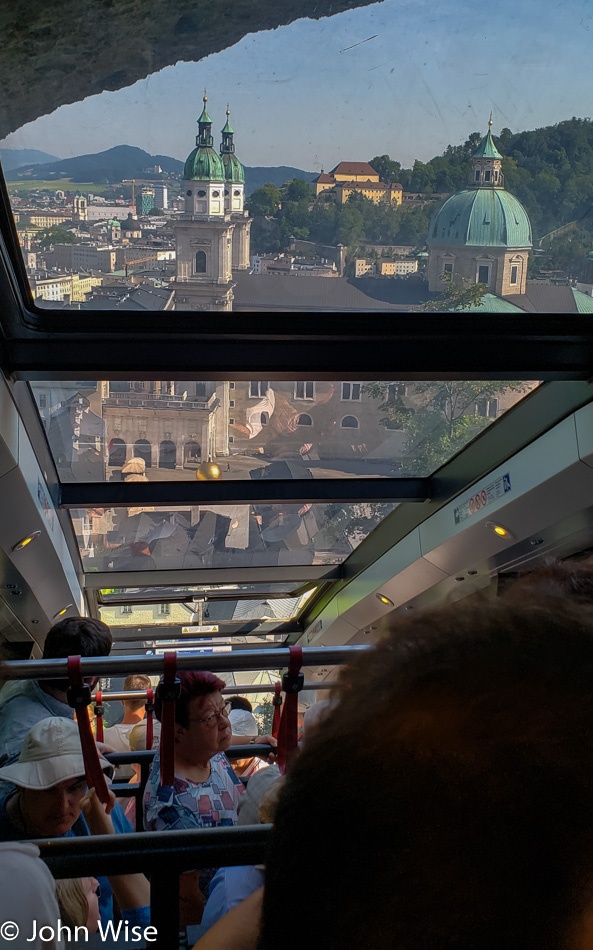
Sometimes, there are shortcuts on our path, and a few extra coins will allow us to speed our travels. Today, instead of pushing my bum knee up the hill, we are opting to ride the funicular up to Hohensalzburg Fortress. Back in 1515, a primitive funicular was written about that made the steep climb to the fortress; while this one is certainly quite modern this might just be the oldest operational railway on earth.
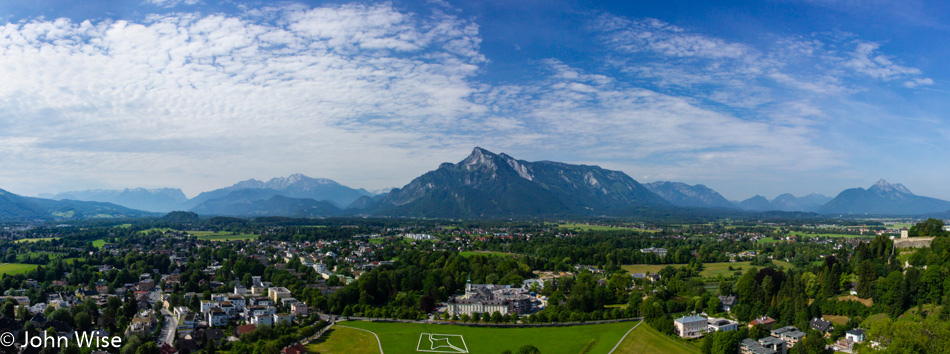
As you leave the funicular, you are presented with a cafe and a tremendous view. I’d recommend you stop and enjoy a piece of apple strudel and a coffee while basking in this beauty; it will make you look ten years younger.

Maybe because it was Wednesday, or maybe it’s due to it not being the main summer vacation time here in Europe, but it was pleasantly not crowded today. On Sundays, there is live music performed up here; why not every day?
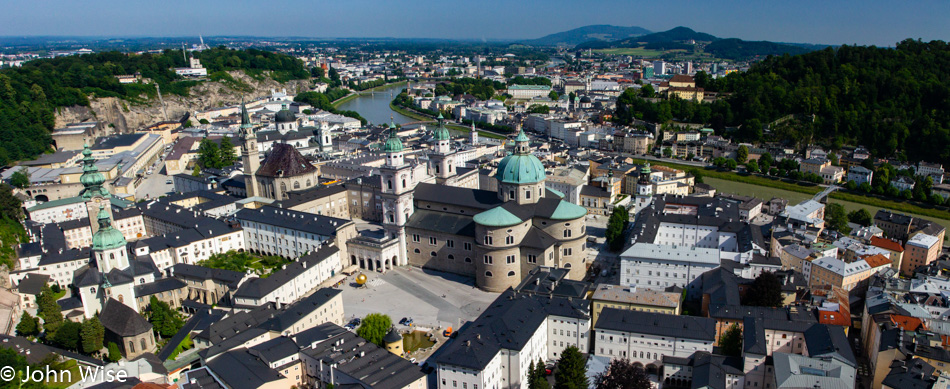
Looking down into Old Town from the Hohensalzburg Fortress. That’s the Salzach River runs through the city, its source is in the Kitzbühel Alps. It’s a short river of just 141 miles (227 km) and joins the Danube up north on the German-Austrian border.

By now, you are probably wondering where the churches are. So are we.

There on the door to our left was the St. George’s Chapel, thus satisfying our hourly need to visit a church.
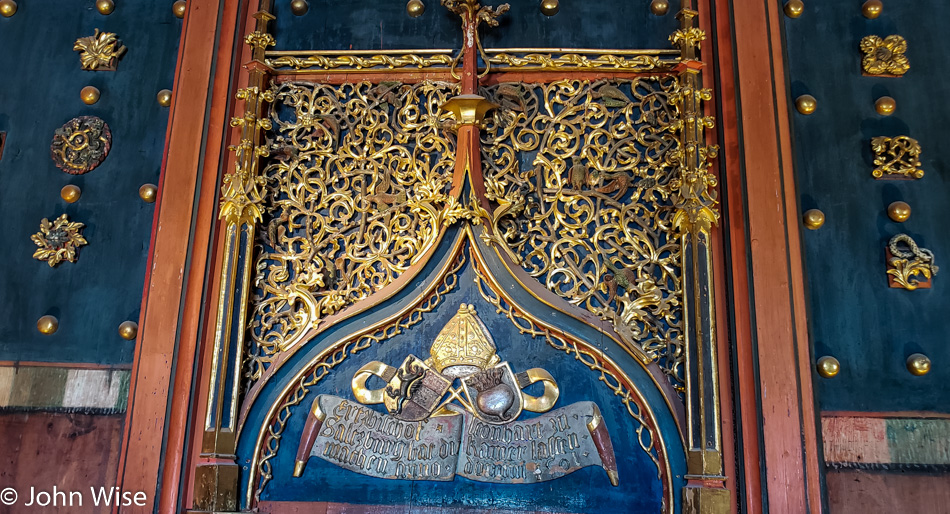
And beyond the church, some museum exhibits where we were requested not to take photos.

From here, we were about done visiting the fortress and were ready for our funicular delivery back to lower earth.
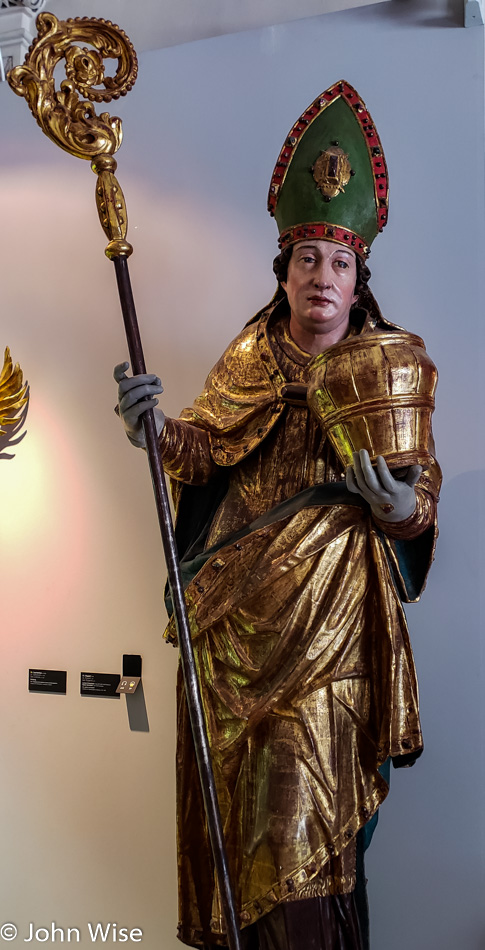
It’s not a church but a museum exhibit featuring items from a church, so it’s a win-win situation for us. We are in the Domquartier complex of museums where, yet again, we are asked not to take photographs. What’s up with these party poopers?
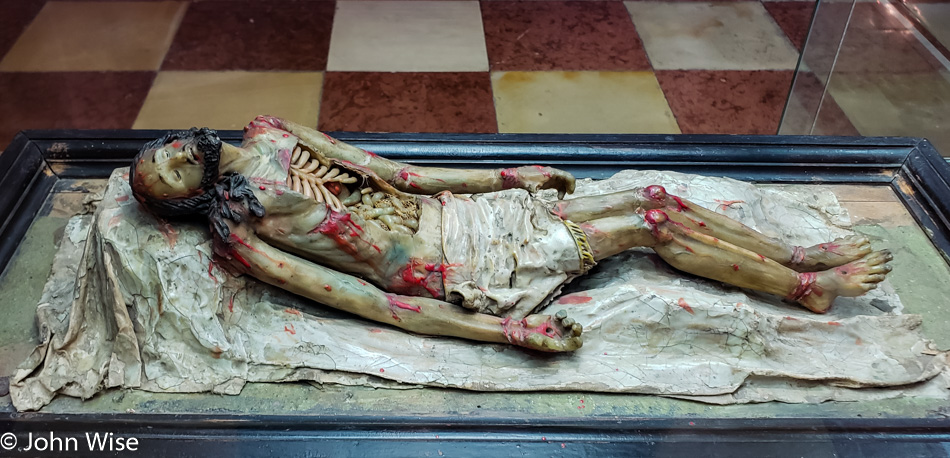
“Dead Christ on his Coffin” from about 1750 elicited a strange cackle from an American visitor who had a private docent accompanying her. She vigorously and adamantly begged this apparent university professor to explain to her how exceptional this piece must be, seeing it features Christ with maggots in his gut. She wanted nothing to do with the explanation that those were the artistic representation of intestines.
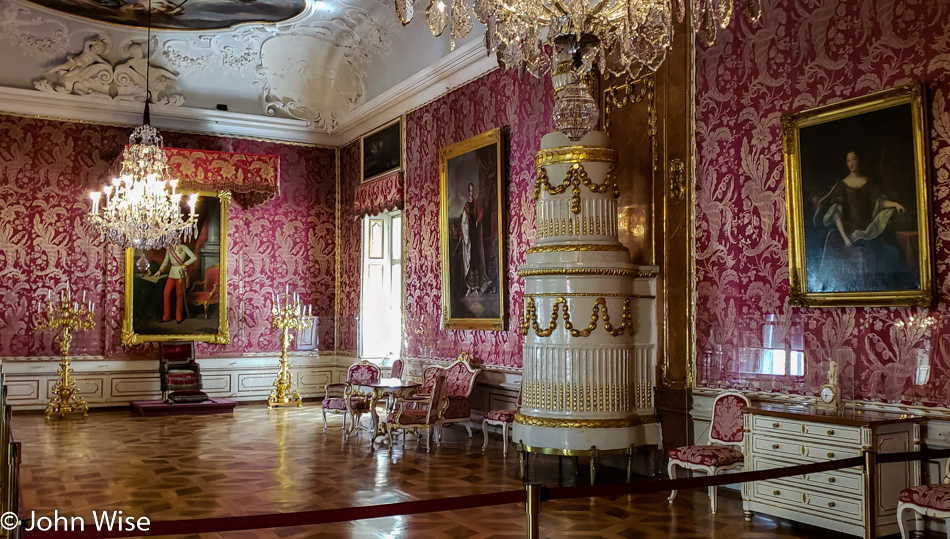
This is one of the staterooms of the Residenz.
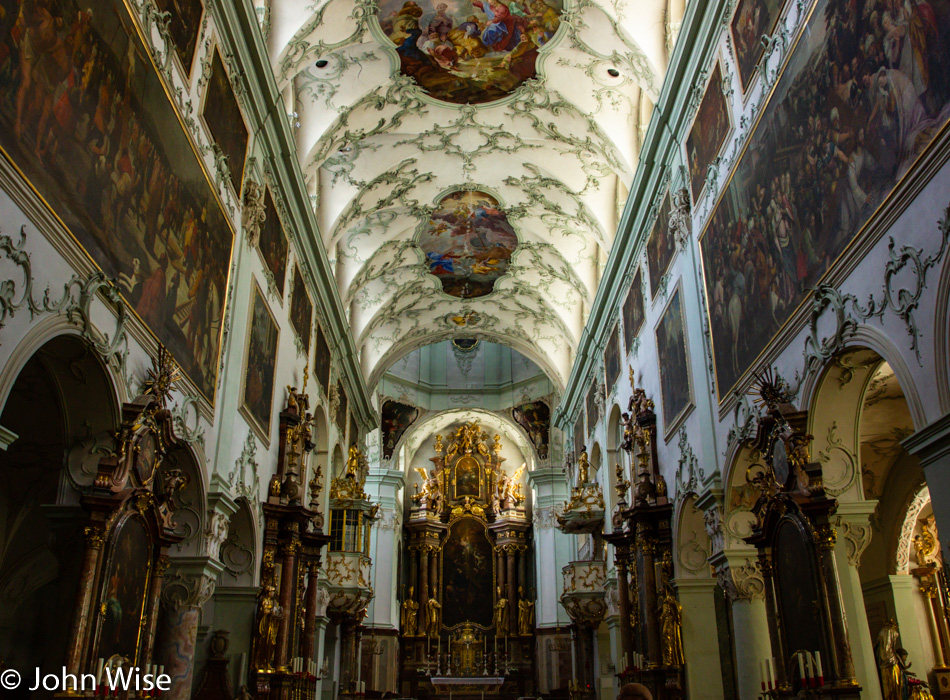
Getting even churchier with a visit to St. Peter’s Abbey and Monastery, has been serving up missionary work since 696. That’s over 1,300 years for those of you who don’t know that there was human history before the “founding” of America.

Tomb of Field Marshal General Hans Werner von Raitenau.
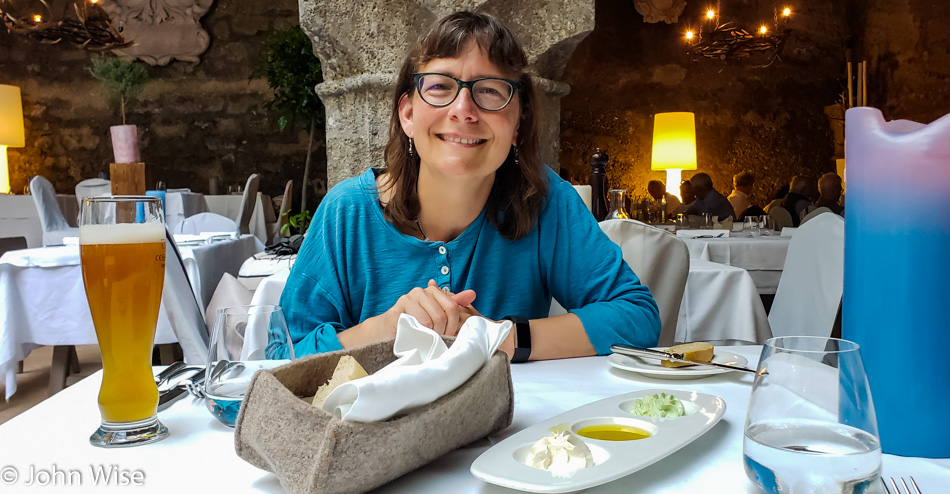
Time for an exquisite lunch in a swanky place next to the monastery. We are about to dine at St. Peter Stiftskulinarium, which has been feeding people since 803, making it Europe’s oldest restaurant. After our amazing lunch, it was time to head down the road for the beginning of our return to Germany.

We are not on the fastest road to Germany, but it is far more scenic than the one that travels north of here.

Sheer rock faces with a ring of trees that appear to be growing on some kind of lip. I wonder what’s up top?
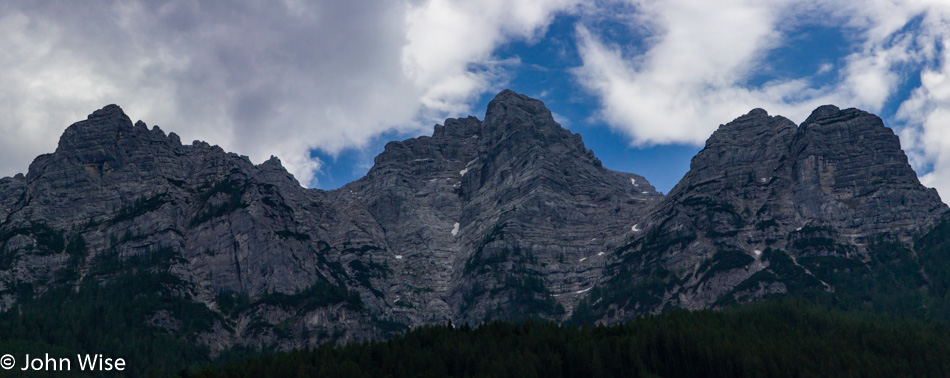
When you see this photo in its full resolution, you’ll notice that the rocks are well-worn by erosion. Something to consider is that there are no visible debris collections or talus at the foot of these mountains. This begs the question if the rocks have been carried away or did these mountains stop crumbling long ago.
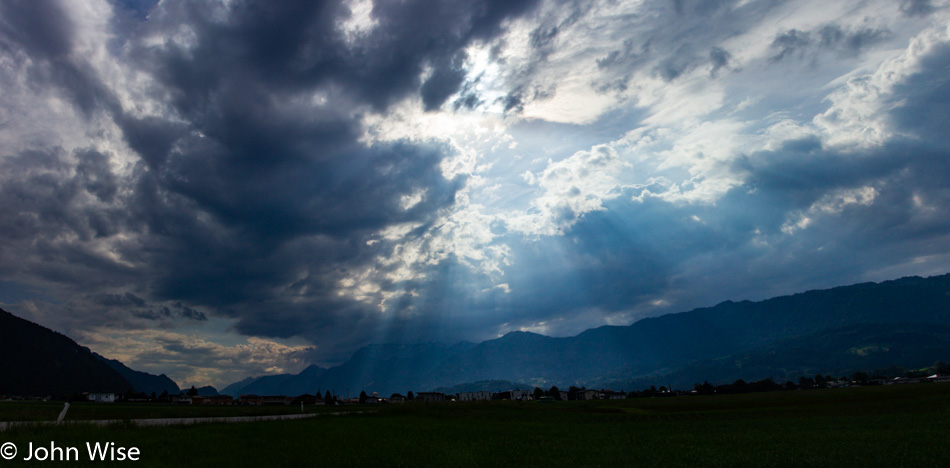
These clouds have been moving in and out all afternoon; as a matter of fact, we had a bit of a heavy downpour just before leaving Salzburg that had us taking cover for about 10 minutes before darting for the car.

Hazelnut and vanilla soft-serve ice cream had me wanting a second cone for the rest of our trip. Why oh why can’t we have this quality of ice cream anywhere in America and who gave McDonald’s permission to call what they sell soft serve too? Okay, to be fair, there is Anderson’s Custard in Buffalo, New York, which is pretty amazing, as is Andy’s in Missouri, but that is it. Don’t even ask about whatever it is that they sell at DQ because it isn’t what it claims.

Storm and sun make me think of Sturm and Drang, which makes me think about The Sorrows of Young Werther by Goethe, which makes me think about Caroline in Vienna or Frankfurt, or Weimar – where we visited five years ago, and I forgot to fill in that day for my blog. So now I’m feeling the Sorrows of Old John, whose Sturm is not as Drang as it used to be.

We are starting to cross through the mountains to the north side of the Alps.
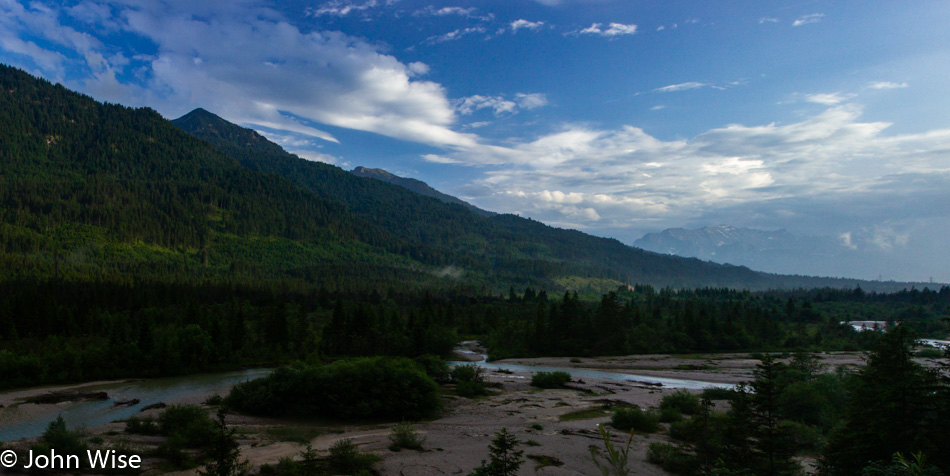
A single-lane toll road cuts a shortcut through the mountains. It’s beautiful out here, and we get to see a side of Germany not typically seen: a landscape for kilometers with no sign of a village or small town.

Just to my right, there’s a small hint of a rainbow, but not enough to warrant pointing the camera at it.
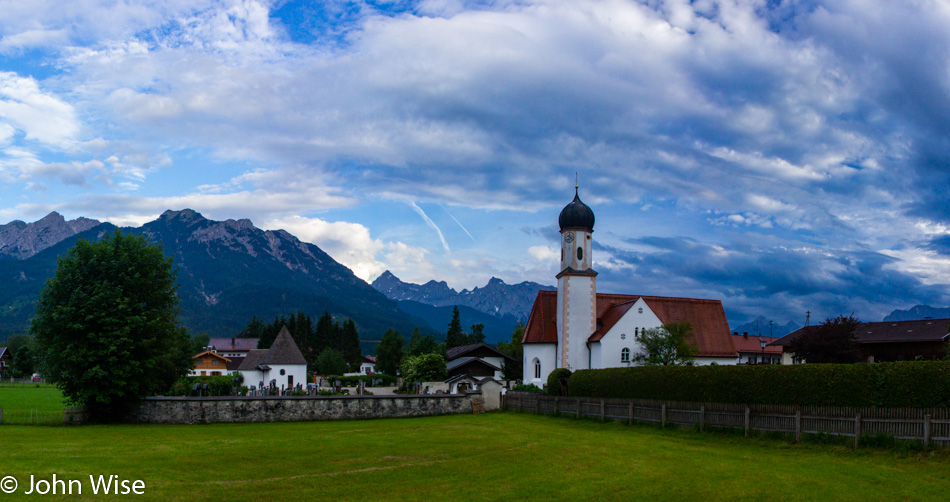
Back to civilization. So now we’ve been on the southern side of the Alps, in the middle of the Alps, and now we are on the north side of the Alps. Tomorrow, we are supposed to be on top of the Alps, but the weather needs to be on our side. Hopefully, I didn’t wish too hard for rain.
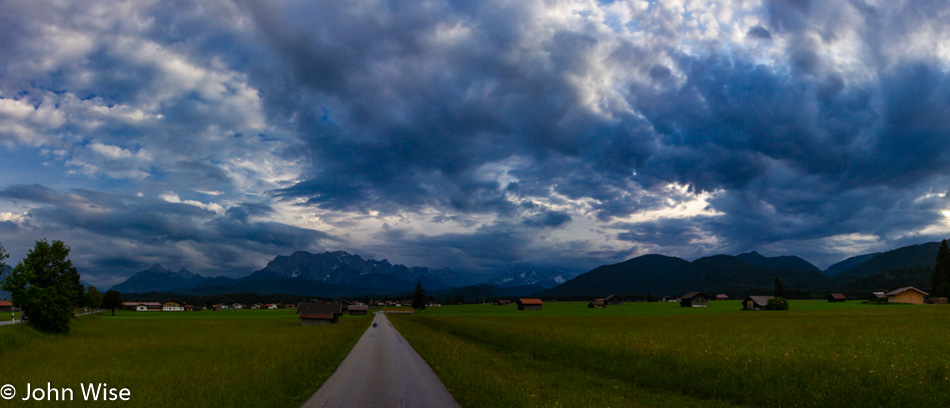
What might have otherwise been a simple picture of pastures, flowers, farmhouses, and snow-covered mountains in the Alps is transformed by the majestic heavy clouds that transform a landscape into one of high drama.

We are now in Garmisch-Partenkirchen, heading to a parking garage after we checked into the Gasthof Fraundorfer and figured out that we’ll be eating dinner there too.

Gasthof Fraundorfer is a quaint, touristy bit of Bavarian cliches that make you fall in love with the place once you are old enough. Thirty years ago, you wouldn’t have caught Caroline or me here for all the proverbial tea in China or beer at Oktoberfest. Here in our 50s, there’s certainly something quite appealing about all of this.
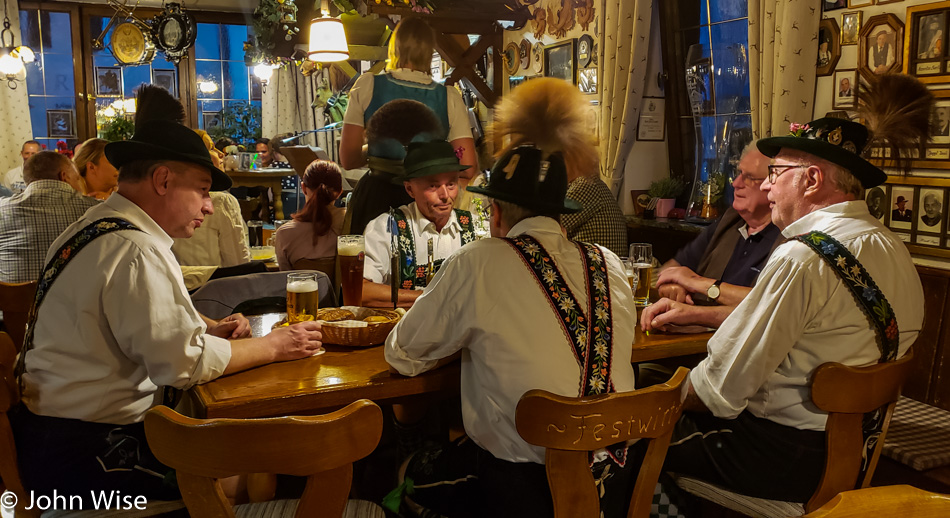
You are probably looking at about $20,000 worth of Bavarian clothing, known as trachten in German-speaking countries. Caroline would love for me to get some lederhosen but when we looked at their 1,200 Euro price tag, I took a double-take. If you want to go full traditional, you’ll need the hat, the Gamsbart (the hairy thing on the hat), suspenders with hand-embroidered edelweiss flowers for them, jackets, special shoes, and, of course, socks. These guys on the adjacent table were musicians just finished with their work for the day and had sat down at what must be the busiest place in town. You can rest assured that we had a traditional German meal with all of the accompaniments.

Our room upstairs was right out of the 1970s. I couldn’t find an Airbnb anywhere in the region, hence we opted for a hotel.
Note: Due to the nature of tomorrow’s post and the focus I want it to have, I’m putting this here that we decided in the morning that we were not visiting the Zugspitze for a view atop the Alps. The weather was forecast as a mixed bag, and with the cost of taking the cable car being about $100 for both of us, we felt that the weather should be perfect for such an expense. Maybe we’ll visit another time. As for our change of plans, Caroline said it best, “We are going from the highest point in Germany to its lowest point in history.”

